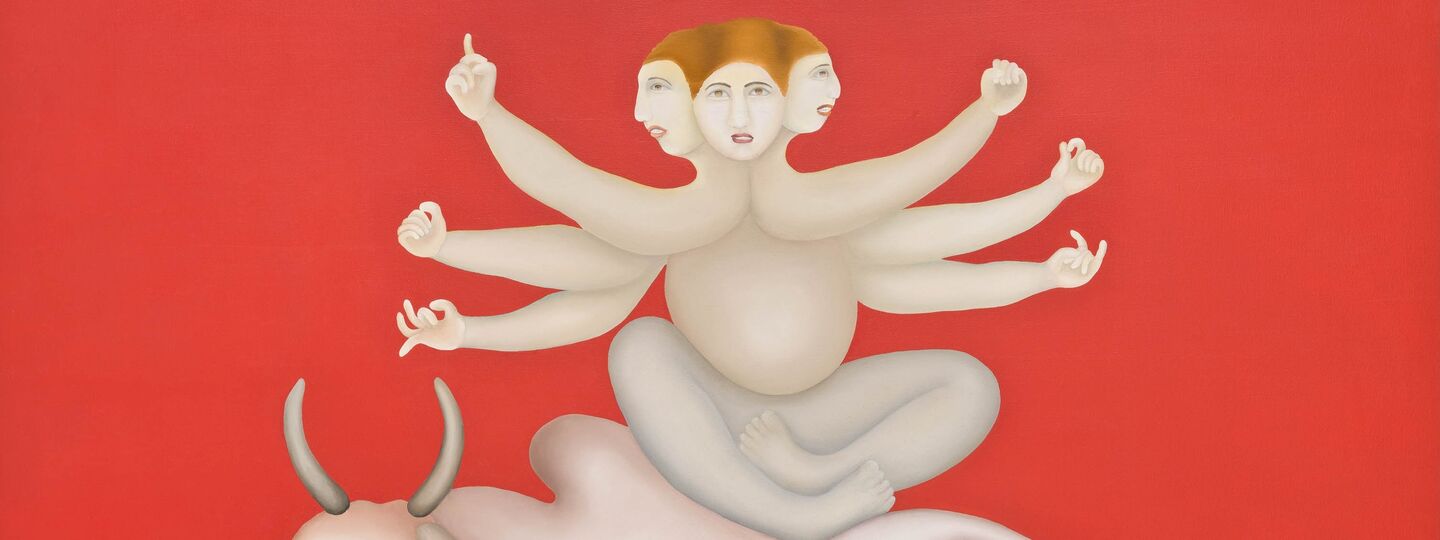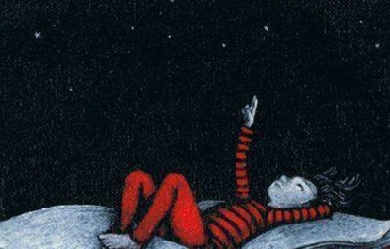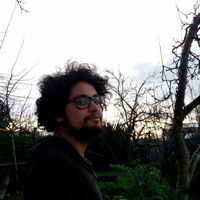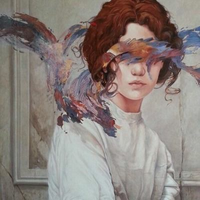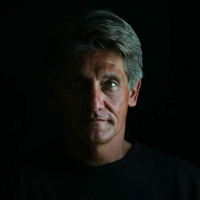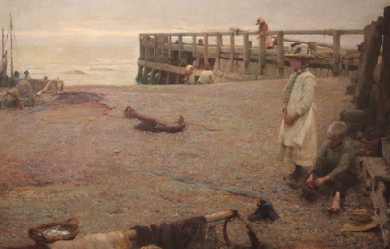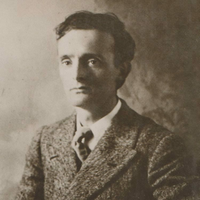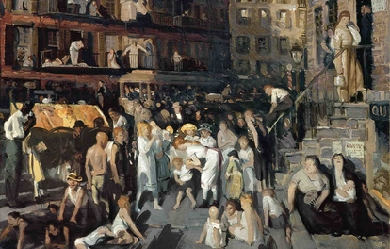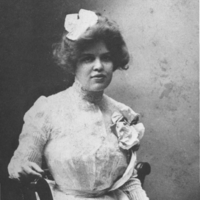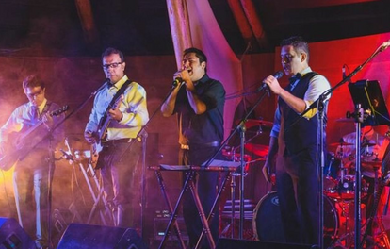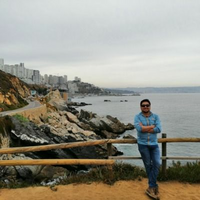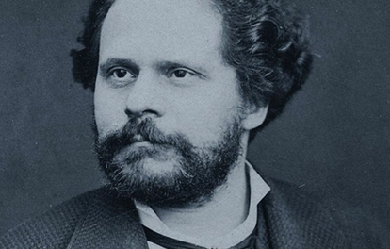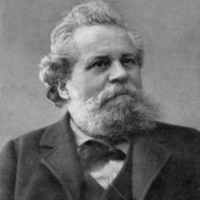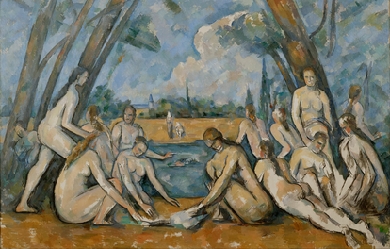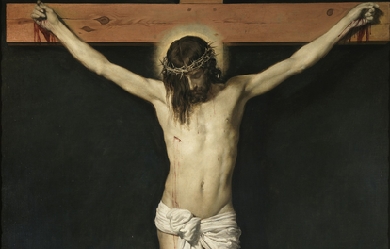
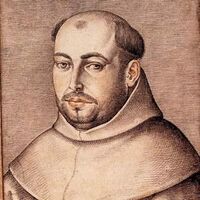
San Juan de la Cruz, O.C.D., cuyo nombre de nacimiento era Juan de Yepes Álvarez y su primer nombre como fraile Juan de San Matías, O. Carm. (Fontiveros, Ávila, España, 24 de junio de 1542 – Úbeda, Jaén, 14 de diciembre de 1591) fue un religioso y poeta místico del renacimiento español. Fue reformador de la Orden de los Carmelitas y cofundador de la Orden de Carmelitas Descalzos con Santa Teresa de Jesús. Desde 1952 es el patrono de los poetas en lengua española. Primeros años Nació en 1542 en la localidad abulense de Fontiveros, sita en la amplia paramera delimitada por Madrigal de las Altas Torres, Arévalo y Ávila. Fue hijo de un tejedor toledano de buratos llamado Gonzalo de Yepes y de Catalina Álvarez.3 Tenía dos hermanos mayores llamados Francisco y Luis. El padre de Juan murió cuando tenía cuatro años lo que dejó a la familia en una difícil situación.4 Su hermano Luis murió cuando él tenía seis años, quizá por mala alimentación.5 La madre y los dos hijos restantes, Francisco y el propio Juan, sufren una acuciante pobreza por lo que se ven obligados a trasladarse primero a Arévalo, donde viven durante cuatro años, y en 1551 a Medina del Campo. Estas penalidades pasadas hicieron de Juan un hombre de escasa corpulencia, bastante bajo de estatura, tanto que Santa Teresa de Jesús lo llamaba «mi medio fraile». El incremento de fortuna que les reportó el matrimonio del hermano mayor con Ana Izquierdo consiguió que se establecieran allí definitivamente. Juan, gracias a su condición de pobre de solemnidad, pudo asistir al Colegio de los Niños de la Doctrina,6 privilegio que le obliga a realizar ciertas contraprestaciones, como asistir en el convento, la ayuda a Misa y a los Oficios, el acompañamiento de entierros y la práctica de pedir limosna. La mínima formación recibida en el colegio le capacitó para continuar su formación en el recién creado (1551) colegio de los jesuitas, que le dieron una sólida base en Humanidades. Como alumno externo y a tiempo parcial, debía compaginar sus estudios con un trabajo de asistencia en el Hospital de Nuestra Señora de la Concepción de Medina del Campo, especializado en la curación de enfermedades venéreas contagiosas. Así, pues, entre 1559 y 1563, estudia con los jesuitas; durante los primeros tres años, recibe la formación según la novedosa Ratio Studiorum, en la que el latín era la base de todo el currículo; en el cuarto año, aparte de recibir instrucción retórica, aprende a escribir en latín, a construir versos en este idioma y a traducir a Cicerón, Julio César, Virgilio, Ovidio, Marcial y Horacio. Simultáneamente, vive las nuevas corrientes del humanismo cristiano, con estilo y comportamientos renovados en la pedagogía. A los veintiún años, en 1563, ingresa en el Convento de los Padres Carmelitas de Medina del Campo, de la Orden de los Carmelitas, y adopta el nombre de Fray Juan de san Matías. Tras realizar el noviciado entre 1563 y 1564 en el Convento de Santa Ana, se traslada a Salamanca donde estudiará en el Colegio de San Andrés de los Cármenes entre 1564 y 1567 los tres cursos preceptivos para bachillerarse en artes. Durante el tercer curso, fue nombrado, por sus destrezas dialécticas, prefecto de estudiantes en el colegio de San Andrés. Relación con Santa Teresa de Jesús Su insatisfacción con el modo de vivir la experiencia contemplativa en el Carmelo, le hacen considerar irse a la Cartuja,7 pero en 1567 regresa a Medina del Campo por unos pocos días para ser ordenado presbítero y celebrar su primera misa en presencia de su hermano, el resto de su familia y sus amigos del convento y allí conoce a Teresa de Cepeda y Ahumada, futura santa Teresa de Jesús, que había llegado a la ciudad para fundar una nueva sede de su «Reforma carmelita», los llamados carmelitas descalzos. Teresa convence a Juan y lo une a su causa de reforma de su orden, que tropezó con una gran hostilidad por parte de los carmelitas calzados. Juan regresa a Salamanca e inicia estudios de teología durante el curso 1567-1568, pero sólo termina un curso de cuatro por lo que no obtuvo ni siquiera el grado de bachiller. En agosto abandona Salamanca para acompañar a Teresa en su fundación femenina de Valladolid. El 28 de noviembre de 1568 funda en Duruelo el primer convento de la rama masculina del Carmelo Descalzo siguiendo la «Regla Primitiva» de San Alberto esto es, un establecimiento que propugna el retorno a la práctica original de la orden.8 Durante la ceremonia cambia su nombre por el de fray Juan de la Cruz. En 1570 la fundación se trasladó a Mancera,9 donde Juan desempeñó el cargo de subprior y maestro de novicios. En 1571, después de una breve estancia en Pastrana, donde puso en marcha su noviciado, se establece en Alcalá de Henares como rector del recién fundado Colegio convento de Carmelitas Descalzos de San Cirilo. Juan se convierte en uno de los principales formadores para los nuevos adeptos a esta reforma carmelitana. En 1572 viaja, invitado por Teresa de Jesús, al Convento de la Encarnación en Ávila, donde asumirá las tareas de vicario y confesor de las monjas. Permanecerá aquí hasta finales de 1577, por lo que acompañará a la madre Teresa a la fundación de diversos conventos de descalzas, como el de Segovia. Enfrentamiento entre carmelitas Durante este periodo, en el seno de la Orden del Carmelo se habían agravado los conflictos jurisdiccionales entre los carmelitas calzados y descalzos, debidos a distintos enfoques espirituales de la reforma; por lo demás, el pleito se enmarcaba también en la confrontación entre el poder real y el pontificio por dominar el sector de las órdenes religiosas. Así, en 1575, el Capítulo General de los Carmelitas decidió enviar un visitador de la Orden para suprimir los conventos fundados sin licencia del General y de recluir a la madre Teresa en un convento. Finalmente, en 1580 el Carmelo Descalzo se erige en Provincia exenta y en 1588 es reconocida como Orden. En este contexto es en el que se produce el encarcelamiento de Juan de la Cruz, quien ya en 1575 había sido detenido y encarcelado en Medina del Campo durante unos días por los frailes calzados. La noche del 3 de diciembre de 1577 Juan de la Cruz es nuevamente apresado y trasladado al convento de frailes carmelitas de Toledo, donde es obligado a comparecer ante un tribunal de frailes calzados para retractarse de la Reforma teresiana. Ante su negativa, es recluido en una prisión conventual durante ocho meses. Durante este periodo de reclusión escribe las treinta y una primeras estrofas del Cántico espiritual (en la versión conocida como protocántico), varios romances y el poema de la fonte, y los canta en su estrecha reclusión para consolarse. Tras concienciarse de que su liberación iba a ser difícil, planea detenidamente su fuga y entre el 16 y el 18 de mayo de 1578, con la ayuda de un carcelero, se escapa en medio de la noche y se acoge en el convento de las Madres Carmelitas Descalzas, también en Toledo.11 Para mayor seguridad, las monjas lo envían al Hospital de Santa Cruz, en el que estuvo mes y medio. En 1578 se dirige a Andalucía para recuperarse completamente. Pasa por Almodóvar del Campo, cuna de los místicos San Juan de Ávila y San Juan Bautista de la Concepción, y luego llega como Vicario al convento de El Calvario en Beas de Segura, Jaén. Entabla amistad con Ana de Jesús, tras algunas visitas a la fundación de Beas. En junio de 1579 se establece en la fundación de Baeza donde permanece como Rector del Colegio Mayor hasta 1582, en que marcha para Granada tras ser nombrado Tercer Definidor y Prior de los Mártires de esa ciudad. Realiza numerosos viajes por Andalucía y Portugal, por razones del cargo. En 1588 es elegido Primer Definidor y Tercer Consiliario de la Consulta, la cual le traslada a Segovia. Muerte y canonización Tras un nuevo enfrentamiento doctrinal en 1590, es destituido en 1591 de todos sus cargos, y queda como simple súbdito de la comunidad. Durante su viaje de vuelta a Segovia, cae enfermo en el convento de La Peñuela de La Carolina y es trasladado a Úbeda, donde muere la noche del 13 al 14 de diciembre. Inmediatamente tras su muerte, su cuerpo es despojado y se inician los pleitos entre Úbeda y Segovia por la posesión de sus restos. En 1593, éstos, mutilados, se trasladan clandestinamente a Segovia, donde reposan actualmente. El proceso de beatificación y canonización se inició en 1627 y finalizó en 1630. Fue beatificado en 1675 por Clemente X y canonizado por Benedicto XIII en 1726. Posteriormente, el 24 de agosto de 1926, Pío XI lo proclama Doctor de la Iglesia Universal.12 Obra literaria Influencia La poesía de Juan de Yepes constituye el punto de encuentro de una larga tradición literaria. Su lírica integra tradiciones literarias de distinto origen que, aunadas por el escritor en sus textos, van adquiriendo significados y valores múltiples que sobrepasan aquellos que tenían en su origen. La crítica, desde Dámaso Alonso, ha puesto de relieve la confluencia de tres influjos: por un lado, el bíblico del Cantar de los Cantares, y, por otro, la tradición de la poesía culta italianizante y la tradición de la poesía popular y de cancioneros del Renacimiento español. El influjo de la Biblia es fundamental en su poesía, en tanto actúa como molde y catalizador del resto de lecturas que conforman el bagaje cultural de San Juan. Particularmente, resulta trascendental en el Cántico espiritual, cuyo simbolismo e imágenes tienen su origen en el Cantar de los cantares. Religiosidad y filología La obra de San Juan de la Cruz ha sido, desde siempre, enfocada desde dos perspectivas, la teológica y la literaria, que, en muchas ocasiones, se han presentado mezcladas. Perspectiva religiosa la obra de San Juan sufre una serie de manipulaciones tendentes a integrarla dentro de los límites y convenciones de la ortodoxia. Probablemente, la primera manipulación la realiza el propio autor cuando se decide a redactar los comentarios. Domingo Ynduráin Muñoz La cita hace referencia a los comentarios o paráfrasis explicativa que Juan de la Cruz escribió para su obra más importante, el llamado Cántico espiritual, con una finalidad didáctica como resultado de las dificultades de adaptar la estructura del poema al esquema del itinerario místico (las tres vías y los tres estados correlativos). Esta presencia teológica sobre su obra, y en concreto sobre el Cántico, se ha manifestado también en las constantes manipulaciones de tipo editorial que ha sufrido, en forma de añadidos al título o de epígrafes para determinados grupos de estrofas del poema. Consecuentemente, una importante rama de los estudios sanjuanistas se ha dedicado a demostrar la adecuación de lo escrito por San Juan a la ortodoxia religiosa católica, privilegiando los Comentarios en prosa sobre la poesía. Perspectiva filológica Por otro lado, es frecuente en el estudio literario de su obra que o bien se den saltos continuos a lo teológico, o bien que se estudien de forma conjunta la poesía y los Comentarios doctrinales del propio poeta, con la idea de que estos son necesarios para comprender aquella. Frente a esta vertiente de los estudios sanjuanistas, se encuentra otra que postula que «la necesidad (o posibilidad) de la interpretación religiosa es algo que debe ser argumentado y discutido en cada caso», en tanto que el sentido objetivo de la poesía de San Juan no obliga necesariamente a aceptar un significado religioso. Combinando la antigua simbología del Cantar de los cantares con las fórmulas propias del petrarquismo, produjo una rica literatura mística, que hunde sus raíces en la teología tomista y en los místicos medievales alemanes y flamencos. Su producción refleja una amplia formación religiosa, aunque deja traslucir el influjo del Cancionero tradicional del siglo XVI, sobre todo en el uso del amor profano (las figuras del amante y de la amada) para simbolizar y representar el sentimiento místico del amor divino. La estrofa más empleada en sus poemas es la lira, aunque demuestra igual soltura en el uso del romance octosílabo. San Juan utiliza determinados recursos estilísticos con una profusión y madurez poco frecuentes, dando un nuevo y más profundo sentido a las expresiones paradójicas («cauterio suave»), a las exclamaciones estremecedoras («¡Oh, llama de amor viva!») habituales en los cancioneros. Además, emplea símbolos como la casa o morada, la noche, la luz, la fuente, la oscuridad, la caza de cetrería, la caída, el vuelo, los animales etcétera. Lo que mejor define su poesía es su extraordinaria intensidad expresiva, gracias a la perfecta adecuación y el equilibrio de cada una de sus imágenes. A ello contribuye así mismo su tendencia a abandonar el registro discursivo y eliminar nexos neutros carentes de valor estético para buscar una yuxtaposición constante de elementos poéticos de gran plasticidad en torno a un elemento central, como ha demostrado Dámaso Alonso. Poesía Su obra poética está compuesta por tres poemas considerados mayores: Noche oscura, Cántico espiritual y Llama de amor viva; y un conjunto de poemas habitualmente calificados como menores: cinco glosas, diez romances (nueve de ellos pueden contarse como una sola composición) y dos cantares. La difusión de su obra fue manuscrita, y aún no se han dilucidado todos los problemas textuales que conllevan. En prosa escribió cuatro comentarios a sus poemas mayores: Subida del Monte Carmelo y Noche oscura para el primero de estos poemas, y otros tratados homónimos sobre el Cántico espiritual y Llama de amor viva. Las poesías atribuibles sin lugar a duda a San Juan de la Cruz son las recogidas en el códice de Sanlúcar o manuscrito S, ya que este fue supervisado por el mismo San Juan. El repertorio de sus poemas, según dicha fuente, se restringe a diez composiciones (los tres poemas mayores citados y otras siete composiciones), siempre y cuando los romances que comprenden los textos titulados In principio erat Verbum, que son un total de nueve, sean considerados una única obra. La autenticidad del resto de su obra poética no ha podido aún ser dilucidada por la crítica. Por tradición se acepta generalmente que también son suyos los poemas Sin arrimo y con arrimo y Por toda la hermosura, y las letrillas Del Verbo divino y Olvido de lo criado. Las siete glosas y poemas «menores» cuya autoría no está discutida son los siguientes: (se citan por el primer verso): * Entréme donde no supe * Glosa al Vivo sin vivir en mí * Tras de un amoroso lance * Un pastorcico solo está penado * Que bien sé yo la fonte * En el principio moraba * In principio erat Verbum (nueve romances cuyos primeros versos son: «En aquel amor inmenso», «Una esposa que te ame», «Hágase, pues, dijo el Padre», «Con esta buena esperanza», «En aquellos y otros ruegos», «Ya que el tiempo era llegado», «Entonces llamó un arcángel», «Ya que era llegado el tiempo» y «Encima de las corrientes») Prosa Su obra en prosa pretende ser corolario explicativo, dado el hermetismo simbólico que entre cierta crítica se atribuye su poesía: (las tres primeras han sido editadas juntas reunidas en el volumen Obras espirituales que encaminan a un alma a la unión perfecta con Dios) y Cántico espiritual. * Subida al monte Carmelo (1578-1583) * Noche oscura del alma * Cántico espiritual (1584) * Llama de amor viva (1584) Doctrina Toda su doctrina gira en torno al símbolo de la «noche oscura», imagen que ya era usada en la literatura mística, pero a la que él dio una forma nueva y original. La noche, al borrar los límites de las cosas, le sugiere, en efecto, lo eterno, y de esa manera pasa a simbolizar la negación activa del alma a lo sensible, el absoluto vacío espiritual. El término «noche oscura» lo utiliza san Juan en referencia a las «terribles pruebas que Dios envía al hombre para purificarlo»; ateniéndose a este significado, habla de una noche del sentido y de una noche del espíritu, situadas, respectivamente, al fin de la vía purgativa y de la vía iluminativa, tras las cuales vendría la vía unitiva, aspiración última del alma atormentada por la distancia que la separa de Dios, y realización de su deseo de fusión total con Él. La existencia de estas tres vías se corresponde con las tres potencias clásicas del alma: memoria, entendimiento y voluntad, que en este mismo orden son reducidas a un estado de perfecto silencio. El silencio de la memoria es llamado en la mística esperanza. El silencio del entendimiento se llama fe y el silencio de la voluntad caridad o amor. Estos tres silencios representan a la par un vaciamiento interior y una renuncia de uno mismo que alcanza su máximo grado a través de la virtud de la caridad. De ahí sobrevienen la enorme angustia y la sensación de muerte característica de los místicos, pues unirse a Dios es un perderse previo a sí mismo para después ganarse. Antes de acceder a la experiencia mística de unión con Dios, el alma experimenta una desoladora sensación de soledad y abandono, acompañada de terribles tentaciones que, si consigue vencer, dejan paso a una nueva luz, pues «Dios no deja vacío sin llenar». En una noche oscura, con ansias, en amores inflamada ¡oh dichosa ventura!, salí sin ser notada estando ya mi casa sosegada. Primera estrofa de Noche oscura. San Juan de la Cruz Originalidad San Juan de la Cruz ofrece una radical originalidad en el misticismo consistente en el concepto de noche oscura espiritual. Desde los inicios históricos de la vida retirada eremítica, los buscadores renunciaban a los bienes y placeres mundanos sometiéndose a ayunos y otras asperezas, con el objeto de vaciar sus deseos del mundo y llenarlo de bienes más elevados. San Juan de la Cruz aclara que esta es solamente la primera etapa, ya que tras ella viene la citada noche espiritual, en que el buscador, ya desapegado de los consuelos y placeres mundanos, perderá también el apoyo de su paz, de sus suavidades interiores, entrando en la más "espantable" noche a la que sí sigue la perfecta contemplación. Una de las partes más originales y más profundas de la doctrina de San Juan de la Cruz, con la que más ha hecho progresar la teología mística y merecido el título de Doctor, es la que se refiere a lo que él llama la noche pasiva del espíritu. Réginald Garrigou-Lagrange Un campo sin explorar. Juan de la Cruz percibe la urgencia y la dificultad, y se decide a explorar todo ese campo de la noche, en especial las zonas más arduas donde ningún escritor había logrado penetrar. José Vicente Rodríguez y Federico Ruiz Monte de perfección En su célebre dibujo del Monte de perfección la recta senda del ascenso aparece flanqueada por dos caminos laterales sin salida. El de la derecha, el camino mundano, señala sus peligros: poseer, gozo, saber, consuelo, descanso. Asimismo el de la izquierda marca también los peligros de un camino espiritual: gloria, gozo, saber, consuelo, descanso. Sorprende especialmente la leyenda de los escalones del camino central, el correcto, en los cuales se lee: Nada, nada, nada, nada, nada Como nota de este gráfico el autor escribe: Da avisos y doctrina, así a los principiantes como a los aprovechados, muy provechosa para que sepan desembarazarse de todo lo temporal y no embarazarse con lo espiritual, y queden en la suma desnudez y libertad de espíritu, la cual se requiere para la divina unión. Algunas de sus frases breves resumen bien su doctrina, como: «Niega tus deseos, y hallarás lo que desea tu corazón» y «El amor no consiste en sentir grandes cosas, sino en tener grande desnudez, y padecer por el Amado». Referencias Wikipedia - http://es.wikipedia.org/wiki/San_Juan_de_la_Cruz
.jpg)
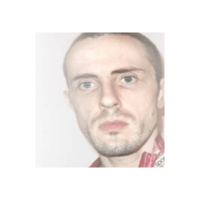
La poésie occupe une place dans la littérature aussi réduite que la place que l'on accorde à ses textes, et nous les homos ⚣ sommes presque aussi marginalisés qu'elle malgré notre étiquette d'icône gay, alors imaginez, la poésie homosexuelle ! De la même façon que j'ai pu regarder des films issus du cinéma gay, j'ai voulu écouter de la poésie gay/queer sur le web... Je n'eus que quelques malheureux textes de la trilogie infernale Verlaine/Rimbaud, et de Jean Genet. Le 24 avr. 2017 je créais donc ma chaîne afin de disposer d'un espace où je puisse dire la poésie que je voulais sans qu'elle soit censurée pour pornographie, car c'est bien connu, seuls les Grands peuvent être excusés d'avoir écrit. L'éternelle formalité vaine d'une pornographie nécessairement péjorative et indigne des Lettres qui la forme. Écrire sur elle ou en partant d'elle est une gémonies par indécence et bien c'est de ces corps putrides du sexe-mort que je veux partir. C'est pour cela que je me revendique "poète queer", non pas pour préjuger de la qualité de mes écrits mais au nom de la rareté de ceux qui s'affichent comme tel : queer.

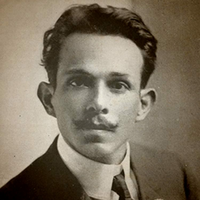
Lisímaco Chavarría Palma (San Ramón, Costa Rica, 10 de mayo de 1878 – 27 de agosto de 1913) fue un escritor y poeta costarricense. De orígenes humildes y escasa formación académica, en su corta vida logró posicionarse como uno de los poetas más importantes de la literatura costarricense, representante del modernismo en Costa Rica pero desarrollador de un estilo propio, que lo llevó a considerársele un renovador de la poesía lírica nacional. Es Benemérito de las Letras Patrias desde 1994. Biografía Poeta nacido en San Ramón de Alajuela (Costa Rica) el 10 de mayo de 1878, en un modesto hogar que tenía su asiento cerca del cementerio de la ciudad. Hijo de Eduardo Chavarría y Teresa Palma. Cursó la enseñanza primaria en su ciudad natal, pero tuvo que abandonar los estudios para dedicarse a la agricultura como medio de subsistencia. En su juventud se dedicó a la pintura y a la escultura en el taller del maestro Manuel Rodríguez Cruz , como medio para ganarse la vida en una época hostil a las manifestaciones literarias. También trabajó como peón agrícola en San Marcos de Tarrazú. Su deseo por arte lo motivó a viajar a San José, donde trabajó para Pedro Pérez Molina por un corto periodo, para luego trasladarse a Cartago, donde laboró de nuevo como imaginero. Durante esta época aprendió el oficio de relojero, y después fue maestro en una escuela de Tabarcia de Mora y en Santa Rita de Nicoya. En 1901 dirigió la escuela de Santa Ana. Luego de su divorcio en 1905, residió nuevamente en San Ramón. Laboró en sus últimos diez años en la Biblioteca Nacional, gracias a su amigo el poeta Justo A. Facio. La consecución de este empleo le permitió solventar su ingreso económico, permitiéndole cultivar su cultura literaria. En 1907, fue redactor del diario La Prensa Libre. En medio de sus labores no dejaba de escribir poesía. Publicó su primer poemario, Orquídeas, en 1904, y unos meses después, el segundo, Nómadas, con un prólogo de Antonio Zambrana. Sus primeros escritos, debido a su timidez, los esconde bajo el nombre de Rosa Corrales de Chavarría, su primera esposa. El triunfo del poema El arte, que obtuvo el primer premio en el festival Fiesta del Arte (1905) precipitó una disputa entre Lisímaco y su esposa por la autoría del mismo, lo que precipitó el divorcio. Poco después, se comprobó que Chavarría era el autor, y al año siguiente, dos poemas suyos, Al pensador y Al trabajo, obtuvieron el primer premio de la Fiesta del Arte de ese año. Entre 1905 y hasta su muerte, se dedicará a mejorar su producción poética, publicando sus trabajos en la revista Páginas Ilustradas. También incursionó en el ensayo. En 1904, escribió varios ensayos sobre las artes plásticas, donde destacaba la labor pedagógica de Tomás Povedano en este campo. En 1907, publicó Añoranzas líricas, e inició sus estudios de pintura en la Escuela de Bellas Artes que dirigió Tomás Povedano. Se le han atribuido varias obras pictóricas de gran calidad cuya autoría no ha podido ser comprobada. En 1908 publicó su libro Desde los Andes, que lo dio a conocer como poeta en Hispanoamérica. Esto permitió que revistas extranjeras comenzaran a publicar sus poemas: France Amerique (París, Francia), Cuba (La Habana, Cuba), América (Nueva York, EEUU), Expectación literaria (Alicante, España), El Comercio (Quito, Ecuador), El diario de la tarde (Mazatlán, México). También lo puso en contacto con prestigiosos literatos latinoamericanos. Un poema suyo, El árbol del sendero, ganó un certamen de poesía latinoamericana organizado por la revista neoyorquina América, mientras que en México se le declaró segundo poeta de Hispanoamérica, luego de Rubén Darío. En 1909, por su Poema del agua, obtuvo el galardón La Flor Natural en los juegos florales de Costa Rica y dos Menciones Honoríficas por Palabras de la momia y Los carboneros. Este premio nacional, marca la consagración de Lisímaco como poeta de una época y lo lanza internacionalmente mediante el reconocimiento de figuras tan prestigiosas como Rubén Darío, Manuel Magallanes Moure, Manuel Baldomero Ugarte, Ismael Urdaneta, José Enrique Rodó, quienes se convirtieron en sus amigos epistolares. Lisímaco, afectado de tuberculosis, fallece en casa de su madre en San Ramón, la tarde del 27 de agosto de 1913. Fue declarado Benemérito de las Letras Patrias el 27 de abril de 1994 por la Asamblea Legislativa de Costa Rica. References Wikipedia—https://es.wikipedia.org/wiki/Lisímaco_Chavarría’’

Just tryna get my poems out there and let people know they're not alone <3 follow me and I'll follow back . I write about a range of things from recovery, to depression, to happiness and all in between. Hopefully some can relate and I have the honor of helping someone get through a rough time.
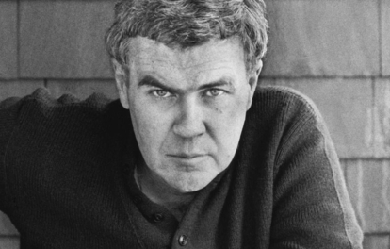
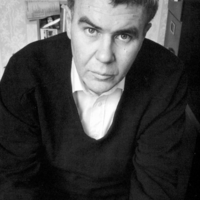
Raymond Clevie Carver, Jr. (May 25, 1938– August 2, 1988) was an American short-story writer and poet. Carver contributed to the revitalization of the American short story in literature during the 1980s. Early life Carver was born in Clatskanie, Oregon, a mill town on the Columbia River, and grew up in Yakima, Washington, the son of Ella Beatrice (née Casey) and Clevie Raymond Carver. His father, a sawmill worker from Arkansas, was a fisherman and heavy drinker. Carver’s mother worked on and off as a waitress and a retail clerk. His one brother, James Franklin Carver, was born in 1943. Carver was educated at local schools in Yakima, Washington. In his spare time, he read mostly novels by Mickey Spillane or publications such as Sports Afield and Outdoor Life, and hunted and fished with friends and family. After graduating from Yakima High School in 1956, Carver worked with his father at a sawmill in California. In June 1957, at age 19, he married 16-year-old Maryann Burk, who had just graduated from a private Episcopal school for girls. Their daughter, Christine La Rae, was born in December 1957. Their second child, a boy named Vance Lindsay, was born a year later. He supported his family by working as a delivery man, janitor, library assistant, and sawmill laborer. During their marriage, Maryann also supported the family by working as an administrative assistant and a high school English teacher, salesperson, and waitress. Writing career Carver became interested in writing in Paradise, California, where he had moved with his family to be close to his mother-in-law. While attending Chico State College, he enrolled in a creative writing course taught by the novelist John Gardner, a recent doctoral graduate of the Iowa Writers’ Workshop who became a mentor and had a major influence on Carver’s life and career. Carver’s first published story, “The Furious Seasons”, appeared in 1961. More florid than his later work, the story strongly bore the influence of William Faulkner. “Furious Seasons” was later used as a title for a collection of stories published by Capra Press, and is now in the recent collection, No Heroics, Please and Call If You Need Me. It is a common misconception that Carver was influenced by Ernest Hemingway, as both writers exhibit a similar economical and plain prose style. In his essay “On Influence”, however, Carver states clearly that, while he was an admirer of Hemingway’s fiction, he never saw him as an influence, citing instead the work of Lawrence Durrell. Carver continued his studies under the short-story writer Richard Cortez Day (like Gardner, a recent PhD alumnus of the Iowa program) at Humboldt State College in Arcata, California. After electing not to take the foreign language courses required by the English program, he received his B.A. in general studies in 1963. During this period he was first published and served as editor for Toyon, the university’s literary magazine, in which he published several of his own pieces under his own name as well as the pseudonym John Vale. With his B– average—exacerbated by his penchant to forsake coursework for literary endeavors—ballasted by a sterling recommendation from Day, Carver was accepted into the Iowa Writers’ Workshop on a $1,000 fellowship for the 1963–1964 academic year. Homesick for California and unable to fully acclimate to the program’s upper middle class milieu, he only completed 12 credits out of the 30 required for a M.A. degree or 60 for the M.F.A. degree. Although he was awarded a fellowship for a second year of study from program director Paul Engle after Maryann Carver personally interceded and compared her husband’s plight to Tennessee Williams’ deleterious experience in the program three decades earlier, Carver decided to leave the program at the end of the semester. Maryann (who postponed completing her education to support her husband’s educational and literary endeavors) eventually graduated from San Jose State College in 1970 and taught English at Los Altos High School until 1977, when she enrolled in the University of California, Santa Barbara’s doctoral program in English. In the mid-1960s, Carver and his family resided in Sacramento, California, where he briefly worked at a bookstore before taking a position as a night custodian at Mercy Hospital. He did all of the janitorial work in the first hour and then wrote at the hospital through the rest of the night. He audited classes at what was then Sacramento State College, including workshops with poet Dennis Schmitz. Carver and Schmitz soon became friends, and Carver wrote and published his first book of poems, Near Klamath, under Schmitz’s guidance. With the appearance of Will You Please Be Quiet, Please? in Martha Foley’s annual Best American Short Stories anthology and the impending publication of Near Klamath by the English Club of Sacramento State College, 1967 was a landmark year for Carver. He briefly enrolled in the library science graduate program at the University of Iowa that summer but returned to California following the death of his father. Shortly thereafter, the Carvers relocated to Palo Alto, California, so he could take his first white-collar job at Science Research Associates (a subsidiary of IBM), where he worked intermittently as a textbook editor and public relations director through 1970. Following a 1968 sojourn to Israel, the Carvers relocated to San Jose, California; as Maryann finished her undergraduate degree, he continued his graduate studies in library science at San Jose State through the end of 1969 before failing once again to take a degree. Nevertheless, he established vital literary connections with Gordon Lish and the poet/publisher George Hitchcock during this period. After the publication of “Neighbors” in the June 1971 issue of Esquire at the instigation of Lish (by now ensconced as the magazine’s fiction editor), Carver began to teach at the University of California, Santa Cruz at the behest of provost James B. Hall (an Iowa alumnus and early mentor to Ken Kesey at the University of Oregon), commuting from his new home in Sunnyvale, California. Following a succession of failed applications, he received a $4,000 Stegner Fellowship to study in the prestigious non-degree graduate creative writing program at Stanford University during the 1972–1973 term, where he cultivated friendships with Kesey-era luminaries Ed McClanahan and Gurney Norman in addition to contemporaneous fellows Chuck Kinder, Max Crawford, and William Kittredge. The fellowship enabled the Carvers to buy a house in Cupertino, California. He took on another teaching job at the University of California, Berkeley that year and briefly rented a pied-à-terre in the city; this development was largely precipitated by his instigation of an extramarital affair with Diane Cecily, a University of Montana administrator and mutual friend of Kittredge who would subsequently marry Kinder. During his years of working at miscellaneous jobs, rearing children, and trying to write, Carver started abusing alcohol. By his own admission, he essentially gave up writing and took to full-time drinking. In the fall semester of 1973, Carver was a visiting lecturer in the Iowa Writers’ Workshop with John Cheever, but Carver stated that they did less teaching than drinking and almost no writing. With the assistance of Kinder and Kittredge, he attempted to simultaneously commute to California and maintain his lectureship at Santa Cruz; after missing all but a handful of classes due to the inherent logistical hurdles of this arrangement (including various alcohol-related illnesses), Hall gently enjoined Carver to resign his position. The next year, after leaving Iowa City, Carver went to a treatment center to attempt to overcome his alcoholism, but continued drinking for three years. His first short story collection, Will You Please Be Quiet, Please?, was published in 1976. The collection itself was shortlisted for the National Book Award, though it sold fewer than 5,000 copies that year. After being hospitalized three times (between June 1976 and February or March 1977), Carver began his “second life” and stopped drinking on June 2, 1977, with the help of Alcoholics Anonymous. While he continued to regularly smoke marijuana and later experimented with cocaine at the behest of Jay McInerney during a 1980 visit to New York City, Carver believed he would have died of alcoholism at the age of 40 had he not overcome his drinking. Carver was nominated again in 1984 for his third major-press collection, Cathedral, the volume generally perceived as his best. Included in the collection are the award-winning stories “A Small, Good Thing”, and “Where I’m Calling From”. John Updike selected the latter for inclusion in The Best American Short Stories of the Century. For his part, Carver saw Cathedral as a watershed in his career, in its shift towards a more optimistic and confidently poetic style. Personal life and death Decline of first marriage The following excerpt from Scott Driscoll’s review of Maryann Burk Carver’s 2006 memoir describes the decline of Maryann and Raymond’s marriage. The fall began with Ray’s trip to Missoula, Mont., in '72 to fish with friend and literary helpmate Bill Kittredge. That summer Ray fell in love with Diane Cecily, an editor at the University of Montana, whom he met at Kittredge’s birthday party. “That’s when the serious drinking began. It broke my heart and hurt the children. It changed everything.” “By fall of '74", writes Carver, “he was more dead than alive. I had to drop out of the Ph.D. program so I could get him cleaned up and drive him to his classes”. Over the next several years, Maryann’s husband physically abused her. Friends urged her to leave Raymond. “But I couldn’t. I really wanted to hang in there for the long haul. I thought I could outlast the drinking. I’d do anything it took. I loved Ray, first, last and always.” Carver describes, without a trace of rancor, what finally put her over the edge. In the fall of '78, with a new teaching position at the University of Texas at El Paso, Ray started seeing Tess Gallagher, a writer from Port Angeles, who would become his muse and wife near the end of his life. “It was like a contretemps. He tried to call me to talk about where we were. I missed the calls. He knew he was about to invite Tess to Thanksgiving.” So he wrote a letter instead. “I thought, I’ve gone through all those years fighting to keep it all balanced. Here it was, coming at me again, the same thing. I had to get on with my own life. But I never fell out of love with him.” Second marriage Carver met the poet Tess Gallagher at a writers’ conference in Dallas, Texas, in November 1977. Beginning in January, 1979, Carver and Gallagher lived together in El Paso, Texas; in a borrowed cabin near Port Angeles, Washington; and in Tucson, Arizona. In 1980, the two moved to Syracuse, New York, where Gallagher had been appointed the coordinator of the creative writing program at Syracuse University; Carver taught as a professor in the English department. He and Gallagher jointly purchased a house in Syracuse, at 832 Maryland Avenue. In ensuing years, the house became so popular that the couple had to hang a sign outside that read “Writers At Work” in order to be left alone. In 1982, Carver and first wife, Maryann, were divorced. He married Gallagher in 1988 in Reno, Nevada. Six weeks later, on August 2, 1988, Carver died in Port Angeles, Washington, from lung cancer at the age of 50. In the same year, he was inducted into the American Academy of Arts and Letters. In December 2006, Gallagher published an essay in The Sun magazine, titled “Instead of Dying”, about alcoholism and Carver’s having maintained his sobriety. The essay is an adaptation of a talk she initially delivered at the Welsh Academy’s Academi Intoxication Conference in 2006. The first lines read: “Instead of dying from alcohol, Raymond Carver chose to live. I would meet him five months after this choice, so I never knew the Ray who drank, except by report and through the characters and actions of his stories and poems.” Death On August 2, 1988, Carver died from lung cancer at the age of 50. He is buried at Ocean View Cemetery in Port Angeles, Washington. The inscription on his tombstone reads: LATE FRAGMENT And did you get what you wanted from this life, even so? I did. And what did you want? To call myself beloved, to feel myself beloved on the earth. His poem “Gravy” is also inscribed. As Carver’s will directed, Tess Gallagher assumed the management of his literary estate. Memorials In Carver’s birth town of Clatskanie, Oregon, a memorial park and statue were constructed in the late 2000s spearheaded by the local Friends of the Library, using mostly local donations. Tess Gallagher was present at the dedication. It is located in the old town on the corner of Lillich and Nehalem Streets, across from the library. A block away, the building where Raymond Carver was born still stands. There is a plaque of Carver in the foyer. Legacy and posthumous publications The novelist Chuck Kinder published Honeymooners: A Cautionary Tale (2001), a roman à clef about his friendship with Carver in the 1970s. Carver’s high school sweetheart and first wife, Maryann Burk Carver, wrote a memoir of her years with Carver, What it Used to be Like: A Portrait of My Marriage to Raymond Carver (2006). The New York Times Book Review and San Francisco Chronicle named Carol Sklenicka’s unauthorized biography, Raymond Carver: A Writer’s Life (2009), published by Scribner, one of the Best Ten Books of that year; and the San Francisco Chronicle deemed it: “exhaustively researched and definitive biography”. Carver’s widow, Tess Gallagher, refused to engage with Sklenica. His final (incomplete) collection of seven stories, titled Elephant in Britain (included in “Where I’m Calling From”) was composed in the five years before his death. The nature of these stories, especially “Errand”, have led to some speculation that Carver was preparing to write a novel. Only one piece of this work has survived– the fragment “The Augustine Notebooks”, first printed in No Heroics, Please. Tess Gallagher published five Carver stories posthumously in Call If You Need Me; one of the stories ("Kindling") won an O. Henry Award in 1999. In his lifetime Carver won five O. Henry Awards; these winning stories were “Are These Actual Miles” (originally titled “What is it?”) (1972), “Put Yourself in My Shoes” (1974), “Are You A Doctor?” (1975), “A Small, Good Thing” (1983), and “Errand” (1988). Tess Gallagher fought with Knopf for permission to republish the stories in What We Talk About When We Talk About Love as they were originally written by Carver, as opposed to the heavily edited and altered versions that appeared in 1981 under the editorship of Gordon Lish. The book, entitled Beginners, was released in hardback on October 1, 2009 in Great Britain, followed by its U.S. publication in the Library of America edition that collected all of Carver’s short fiction in a single volume. Literary characteristics Carver’s career was dedicated to short stories and poetry. He described himself as “inclined toward brevity and intensity” and “hooked on writing short stories” (in the foreword of Where I’m Calling From, a collection published in 1988 and a recipient of an honorable mention in the 2006 New York Times article citing the best works of fiction of the previous 25 years). Another stated reason for his brevity was "that the story [or poem] can be written and read in one sitting." This was not simply a preference but, particularly at the beginning of his career, a practical consideration as he juggled writing with work. His subject matter was often focused on blue-collar experience, and was clearly reflective of his own life. Characteristics of minimalism are generally seen as one of the hallmarks of Carver’s work, although, as reviewer David Wiegand notes: Carver never thought of himself as a minimalist or in any category, for that matter. “He rejected categories generally,” Sklenicka says. “I don’t think he had an abstract mind at all. He just wasn’t built that way, which is why he’s so good at picking the right details that will stand for many things.” Carver’s editor at Esquire, Gordon Lish, was instrumental in shaping Carver’s prose in this direction– where his earlier tutor John Gardner had advised Carver to use fifteen words instead of twenty-five, Lish instructed Carver to use five in place of fifteen. Objecting to the “surgical amputation and transplantation” of Lish’s heavy editing, Carver eventually broke with him. During this time, Carver also submitted poetry to James Dickey, then poetry editor of Esquire. Carver’s style has also been described as dirty realism, which connected him with a group of writers in the 1970s and 1980s that included Richard Ford and Tobias Wolff (two writers with whom Carver was closely acquainted), as well as others such as Ann Beattie, Frederick Barthelme, and Jayne Anne Phillips. With the exception of Beattie, who wrote about upper-middle-class people, these were writers who focused on sadness and loss in the everyday lives of ordinary people—often lower-middle class or isolated and marginalized people. Works Fiction Collections * Will You Please Be Quiet, Please? (first published 1976) * Furious Seasons and other stories (1977) * What We Talk About When We Talk About Love (1981) * Cathedral (1983) * Elephant (1988)– this title only published in Great Britain; included as a section of Where I’m Calling From: New & Selected Stories in the U.S. Compilations * Where I’m Calling From: New & Selected Stories (1988) * Short Cuts: Selected Stories (1993)– published to accompany the Robert Altman film Short Cuts * Collected Stories (2009)– complete short fiction including Beginners Poetry Collections * Near Klamath (1968) * Winter Insomnia (1970) * At Night The Salmon Move (1976) * Fires (1983) * Where Water Comes Together With Other Water (1985) * Ultramarine (1986) * A New Path To The Waterfall (1989) * Gravy (Unknown year) Compilations * In a Marine Light: Selected Poems (1988) * All of Us: The Collected Poems (1996) Screenplays * Dostoevsky (1985, with Tess Gallagher) Films and theatre adaptations * Short Cuts directed by Robert Altman (1993), based on nine Carver short stories and a poem * Everything Goes directed by Andrew Kotatko (2004), starring Hugo Weaving and Abbie Cornish, based on Carver’s short story “Why Don’t You Dance?” * Whoever Was Using This Bed, also directed by Andrew Kotatko (2016), starring Jean-Marc Barr, Radha Mitchell and Jane Birkin, based on Carver’s short story of the same name * Jindabyne directed by Ray Lawrence (2006), based on Carver’s short story “So Much Water So Close to Home” * “After The Denim” directed by Gregory D. Goyins (2010) starring Tom Bower and Karen Landry, based on Carver’s short story “If It Please You” * Everything Must Go directed by Dan Rush (2010), and starring Will Ferrell, based on Carver’s short story “Why Don’t You Dance?” * Carver a production directed by William Gaskill at London’s Arcola Theatre in 1995, adapted from five Carver short stories including “What’s In Alaska?” “Put Yourself in My Shoes” and “Intimacy” * Studentova žena (Croatian) directed by Goran Kovač, based on “The Student’s Wife” * Carousel (Croatian) directed by Toma Zidić, inspired by “Ashtray” * Men Who Don’t Work directed by Alexander Atkins and Andrew Franks, based on “What Do You Do in San Francisco?” * Birdman or (The Unexpected Virtue of Ignorance), directed by Alejandro G. Iñárritu, depicts the mounting of a Broadway production of “What We Talk About When We Talk About Love” as its central storyline. The film’s main character, Riggan Thomson, attributes his choice of acting as a profession to a complimentary note he once received from Raymond Carver written on a cocktail napkin. The film also preludes with Carver’s poem “Late Fragment.” In February 2015, Birdman won four Oscars, including the Academy Award for Best Picture. Musical adaptions * Everything’s Turning to White is a folk rock track written and performed by Paul Kelly on the album So Much Water So Close to Home (1989), which was based on Carver’s short story of the same name. References Wikipedia—https://en.wikipedia.org/wiki/Raymond_Carver
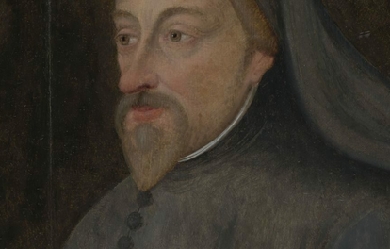

Geoffrey Chaucer (c. 1343 – 25 October 1400), known as the Father of English literature, is widely considered the greatest English poet of the Middle Ages and was the first poet to have been buried in Poet's Corner of Westminster Abbey. While he achieved fame during his lifetime as an author, philosopher, alchemist and astronomer, composing a scientific treatise on the astrolabe for his ten year-old son Lewis, Chaucer also maintained an active career in the civil service as a bureaucrat, courtier and diplomat. Among his many works, which include The Book of the Duchess, the House of Fame, the Legend of Good Women and Troilus and Criseyde, he is best known today for The Canterbury Tales. Chaucer is a crucial figure in developing the legitimacy of the vernacular, Middle English, at a time when the dominant literary languages in England were French and Latin. Geoffrey Chaucer was born in London sometime around 1343, though the precise date and location of his birth remain unknown. His father and grandfather were both London vintners; several previous generations had been merchants in Ipswich. (His family name derives from the French chausseur, meaning "shoemaker".)[1] In 1324 John Chaucer, Geoffrey's father, was kidnapped by an aunt in the hope of marrying the twelve-year-old boy to her daughter in an attempt to keep property in Ipswich. The aunt was imprisoned and the £250 fine levied suggests that the family was financially secure—bourgeois, if not elite.[2] John Chaucer married Agnes Copton, who, in 1349, inherited properties including 24 shops in London from her uncle, Hamo de Copton, who is described in a will dated 3 April 1354 and listed in the City Hustings Roll as "moneyer"; he was said to be moneyer at the Tower of London. In the City Hustings Roll 110, 5, Ric II, dated June 1380, Geoffrey Chaucer refers to himself as me Galfridum Chaucer, filium Johannis Chaucer, Vinetarii, Londonie' . While records concerning the lives of his contemporary poets, William Langland and the Pearl Poet are practically non-existent, since Chaucer was a public servant, his official life is very well documented, with nearly five hundred written items testifying to his career. The first of the "Chaucer Life Records" appears in 1357, in the household accounts of Elizabeth de Burgh, the Countess of Ulster, when he became the noblewoman's page through his father's connections.[3] She was married to Lionel, Duke of Clarence, the second surviving son of the king, Edward III, and the position brought the teenage Chaucer into the close court circle, where he was to remain for the rest of his life. He also worked as a courtier, a diplomat, and a civil servant, as well as working for the king, collecting and inventorying scrap metal. In 1359, in the early stages of the Hundred Years' War, Edward III invaded France and Chaucer travelled with Lionel of Antwerp, 1st Duke of Clarence, Elizabeth's husband, as part of the English army. In 1360, he was captured during the siege of Rheims. Edward paid £16 for his ransom, a considerable sum, and Chaucer was released. After this, Chaucer's life is uncertain, but he seems to have travelled in France, Spain, and Flanders, possibly as a messenger and perhaps even going on a pilgrimage to Santiago de Compostela. Around 1366, Chaucer married Philippa (de) Roet. She was a lady-in-waiting to Edward III's queen, Philippa of Hainault, and a sister of Katherine Swynford, who later (ca. 1396) became the third wife of John of Gaunt. It is uncertain how many children Chaucer and Philippa had, but three or four are most commonly cited. His son, Thomas Chaucer, had an illustrious career, as chief butler to four kings, envoy to France, and Speaker of the House of Commons. Thomas's daughter, Alice, married the Duke of Suffolk. Thomas's great-grandson (Geoffrey's great-great-grandson), John de la Pole, Earl of Lincoln, was the heir to the throne designated by Richard III before he was deposed. Geoffrey's other children probably included Elizabeth Chaucy, a nun at Barking Abbey. Agnes, an attendant at Henry IV's coronation; and another son, Lewis Chaucer. Chaucer’s “Treatise on the Astrolabe” was written for Lewis. Chaucer probably studied law in the Inner Temple (an Inn of Court) at this time. He became a member of the royal court of Edward III as a varlet de chambre, yeoman, or esquire on 20 June 1367, a position which could entail a wide variety of tasks. His wife also received a pension for court employment. He travelled abroad many times, at least some of them in his role as a valet. In 1368, he may have attended the wedding of Lionel of Antwerp to Violante Visconti, daughter of Galeazzo II Visconti, in Milan. Two other literary stars of the era were in attendance: Jean Froissart and Petrarch. Around this time, Chaucer is believed to have written The Book of the Duchess in honour of Blanche of Lancaster, the late wife of John of Gaunt, who died in 1369. Chaucer travelled to Picardy the next year as part of a military expedition; in 1373 he visited Genoa and Florence. Numerous scholars such as Skeat, Boitani, and Rowland suggested that, on this Italian trip, he came into contact with Petrarch or Boccaccio. They introduced him to medieval Italian poetry, the forms and stories of which he would use later. The purposes of a voyage in 1377 are mysterious, as details within the historical record conflict. Later documents suggest it was a mission, along with Jean Froissart, to arrange a marriage between the future King Richard II and a French princess, thereby ending the Hundred Years War. If this was the purpose of their trip, they seem to have been unsuccessful, as no wedding occurred. In 1378, Richard II sent Chaucer as an envoy (secret dispatch) to the Visconti and to Sir John Hawkwood, English condottiere (mercenary leader) in Milan. It has been speculated that it was Hawkwood on whom Chaucer based his character the Knight in the Canterbury Tales, for a description matches that of a fourteenth-century condottiere. A possible indication that his career as a writer was appreciated came when Edward III granted Chaucer "a gallon of wine daily for the rest of his life" for some unspecified task. This was an unusual grant, but given on a day of celebration, St George's Day, 1374, when artistic endeavours were traditionally rewarded, it is assumed to have been another early poetic work. It is not known which, if any, of Chaucer's extant works prompted the reward, but the suggestion of him as poet to a king places him as a precursor to later poets laureate. Chaucer continued to collect the liquid stipend until Richard II came to power, after which it was converted to a monetary grant on 18 April 1378. Chaucer obtained the very substantial job of Comptroller of the Customs for the port of London, which he began on 8 June 1374.[10] He must have been suited for the role as he continued in it for twelve years, a long time in such a post at that time. His life goes undocumented for much of the next ten years, but it is believed that he wrote (or began) most of his famous works during this period. He was mentioned in law papers of 4 May 1380, involved in the raptus of Cecilia Chaumpaigne. What raptus means is unclear, but the incident seems to have been resolved quickly and did not leave a stain on Chaucer's reputation. It is not known if Chaucer was in the city of London at the time of the Peasants' Revolt, but if he was, he would have seen its leaders pass almost directly under his apartment window at Aldgate. While still working as comptroller, Chaucer appears to have moved to Kent, being appointed as one of the commissioners of peace for Kent, at a time when French invasion was a possibility. He is thought to have started work on The Canterbury Tales in the early 1380s. He also became a Member of Parliament for Kent in 1386. There is no further reference after this date to Philippa, Chaucer's wife, and she is presumed to have died in 1387. He survived the political upheavals caused by the Lords Appellants, despite the fact that Chaucer knew some of the men executed over the affair quite well. On 12 July 1389, Chaucer was appointed the clerk of the king's works, a sort of foreman organising most of the king's building projects.[12] No major works were begun during his tenure, but he did conduct repairs on Westminster Palace, St. George's Chapel, Windsor, continue building the wharf at the Tower of London, and build the stands for a tournament held in 1390. It may have been a difficult job, but it paid well: two shillings a day, more than three times his salary as a comptroller. Chaucer was also appointed keeper of the lodge at the King’s park in Feckenham, which was a largely honorary appointment.[13] In September 1390, records say that he was robbed, and possibly injured, while conducting the business, and it was shortly after, on 17 June 1391, that he stopped working in this capacity. Almost immediately, on 22 June, he began as Deputy Forester in the royal forest of North Petherton, Somerset. This was no sinecure, with maintenance an important part of the job, although there were many opportunities to derive profit. He was granted an annual pension of twenty pounds by Richard II in 1394.[14] It is believed that Chaucer stopped work on the Canterbury Tales sometime towards the end of this decade. Not long after the overthrow of his patron, Richard II, in 1399, Chaucer's name fades from the historical record. The last few records of his life show his pension renewed by the new king, and his taking of a lease on a residence within the close of Westminster Abbey on 24 December 1399.[15] Although Henry IV renewed the grants assigned to Chaucer by Richard, Chaucer's own The Complaint of Chaucer to his Purse hints that the grants might not have been paid. The last mention of Chaucer is on 5 June 1400, when some monies owed to him were paid. He is believed to have died of unknown causes on 25 October 1400, but there is no firm evidence for this date, as it comes from the engraving on his tomb, erected more than one hundred years after his death. There is some speculation—most recently in Terry Jones' book Who Murdered Chaucer? : A Medieval Mystery—that he was murdered by enemies of Richard II or even on the orders of his successor Henry IV, but the case is entirely circumstantial. Chaucer was buried in Westminster Abbey in London, as was his right owing to his status as a tenant of the Abbey's close. In 1556, his remains were transferred to a more ornate tomb, making Chaucer the first writer interred in the area now known as Poets' Corner. Work Chaucer's first major work, The Book of the Duchess, was an elegy for Blanche of Lancaster (who died in 1369). It is possible that this work was commissioned by her husband John of Gaunt, as he granted Chaucer a £10 annuity on 13 June 1374. This would seem to place the writing of The Book of the Duchess between the years 1369 and 1374. Two other early works by Chaucer were Anelida and Arcite and The House of Fame. Chaucer wrote many of his major works in a prolific period when he held the job of customs comptroller for London (1374 to 1386). His Parlement of Foules, The Legend of Good Women and Troilus and Criseyde all date from this time. Also it is believed that he started work on The Canterbury Tales in the early 1380s. Chaucer is best known as the writer of The Canterbury Tales, which is a collection of stories told by fictional pilgrims on the road to the cathedral at Canterbury; these tales would help to shape English literature. The Canterbury Tales contrasts with other literature of the period in the naturalism of its narrative, the variety of stories the pilgrims tell and the varied characters who are engaged in the pilgrimage. Many of the stories narrated by the pilgrims seem to fit their individual characters and social standing, although some of the stories seem ill-fitting to their narrators, perhaps as a result of the incomplete state of the work. Chaucer drew on real life for his cast of pilgrims: the innkeeper shares the name of a contemporary keeper of an inn in Southwark, and real-life identities for the Wife of Bath, the Merchant, the Man of Law and the Student have been suggested. The many jobs that Chaucer held in medieval society—page, soldier, messenger, valet, bureaucrat, foreman and administrator—probably exposed him to many of the types of people he depicted in the Tales. He was able to shape their speech and satirise their manners in what was to become popular literature among people of the same types. Chaucer's works are sometimes grouped into first a French period, then an Italian period and finally an English period, with Chaucer being influenced by those countries' literatures in turn. Certainly Troilus and Criseyde is a middle period work with its reliance on the forms of Italian poetry, little known in England at the time, but to which Chaucer was probably exposed during his frequent trips abroad on court business. In addition, its use of a classical subject and its elaborate, courtly language sets it apart as one of his most complete and well-formed works. In Troilus and Criseyde Chaucer draws heavily on his source, Boccaccio, and on the late Latin philosopher Boethius. However, it is The Canterbury Tales, wherein he focuses on English subjects, with bawdy jokes and respected figures often being undercut with humour, that has cemented his reputation. Chaucer also translated such important works as Boethius' Consolation of Philosophy and The Romance of the Rose by Guillaume de Lorris (extended by Jean de Meun). However, while many scholars maintain that Chaucer did indeed translate part of the text of Roman de la Rose as The Romaunt of the Rose, others claim that this has been effectively disproved. Many of his other works were very loose translations of, or simply based on, works from continental Europe. It is in this role that Chaucer receives some of his earliest critical praise. Eustache Deschamps wrote a ballade on the great translator and called himself a "nettle in Chaucer's garden of poetry". In 1385 Thomas Usk made glowing mention of Chaucer, and John Gower, Chaucer's main poetic rival of the time, also lauded him. This reference was later edited out of Gower's Confessio Amantis and it has been suggested by some that this was because of ill feeling between them, but it is likely due simply to stylistic concerns. One other significant work of Chaucer's is his Treatise on the Astrolabe, possibly for his own son, that describes the form and use of that instrument in detail and is sometimes cited as the first example of technical writing in the English language. Although much of the text may have come from other sources, the treatise indicates that Chaucer was versed in science in addition to his literary talents. Another scientific work discovered in 1952, Equatorie of the Planetis, has similar language and handwriting compared to some considered to be Chaucer's and it continues many of the ideas from the Astrolabe. Furthermore, it contains an example of early European encryption.[16] The attribution of this work to Chaucer is still uncertain. Selected Works The Canterbury Tales Troilus and Criseyde Treatise on the Astrolabe The Legend of Good Women Parlement of Foules Anelida and Arcite The House of Fame The Book of the Duchess Roman de la Rose Translation of Boethius' Consolation of Philosophy (as Boece) References Wikipedia – http://en.wikipedia.org/wiki/Geoffrey_Chaucer
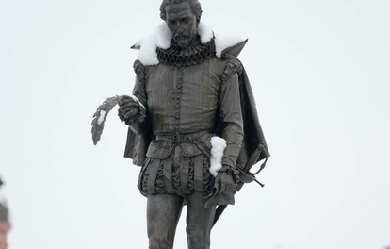
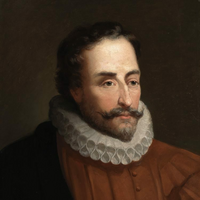
...“Yo, que siempre trabajo y me desvelo por parecer que tengo de poeta la gracia que no quiso darme el cielo”... Miguel de Cervantes Saavedra (¿Alcalá de Henares?, 29 de septiembre de 1547 – Madrid, 22 de abril1 de 1616) fue un soldado, novelista, poeta y dramaturgo español. Es considerado una de las máximas figuras de la literatura española y universalmente conocido por haber escrito Don Quijote de la Mancha, que muchos críticos han descrito como la primera novela moderna y una de las mejores obras de la literatura universal. Se le ha dado el sobrenombre de «Príncipe de los Ingenios». Infancia y juventud El lugar de nacimiento de Miguel de Cervantes no está establecido con absoluta certeza, considerándose como más probable que naciera en Alcalá de Henares, dado que allí fue bautizado, según su acta de bautismo, y que de allí manifestó ser natural en la llamada Información de Argel (1580).3 El día exacto de su nacimiento es desconocido, aunque es probable que naciera el 29 de septiembre, fecha en que se celebra la fiesta del arcángel San Miguel, dada la tradición de recibir el nombre del santoral. Miguel de Cervantes fue bautizado en Alcalá de Henares (España) el 9 de octubre de 1547, en la parroquia de Santa María la Mayor.4 El acta del bautizo reza: Domingo, nueve días del mes de octubre, año del Señor de mill e quinientos e quarenta e siete años, fue baptizado Miguel, hijo de Rodrigo Cervantes e su mujer doña Leonor. Baptizóle el reverendo señor Bartolomé Serrano, cura de Nuestra Señora. Testigos, Baltasar Vázquez, Sacristán, e yo, que le bapticé e firme de mi nombre. Bachiller Serrano. Sus abuelos paternos fueron el licenciado en leyes Juan de Cervantes y doña Leonor de Torreblanca, hija de Juan Luis de Torreblanca, un médico cordobés; su padre se llamaba Rodrigo de Cervantes (1509-1585) y nació en Alcalá de Henares porque su padre tenía entonces trabajo allí; fue cirujano, oficio más parecido al actual practicante que a nuestra idea de médico, y padecía desde niño una extrema sordera, por lo que sus hijos solían acompañarlo a menudo para actuar como intérpretes; Krzysztof Sliwa aporta un documento por el que sabemos que Miguel de Cervantes hizo al menos una vez de intérprete de su padre; don Rodrigo no pudo seguir estudios continuados a causa de su sordera y el carácter inquieto, movedizo e itinerante de su familia, que llegó a moverse entre Córdoba, Sevilla, Toledo, Cuenca, Alcalá de Henares, Guadalajara y Valladolid, que sepamos; sin embargo aprendió cirugía de su abuelo materno cordobés y el padrastro, también médico, que lo sucedió, sin contar con un título oficial. Según Américo Castro, Daniel Eisenberg y otros cervantistas, Cervantes posee ascendencia conversa por ambas líneas familiares. Por el contrario, Jean Canavaggio afirma que no está probado, y lo compara con los documentos que apoyan esta ascendencia sin lugar a dudas para Mateo Alemán; en todo caso, la familia Cervantes estaba muy bien considerada en Córdoba y detentaba allí y en sus cercanías cargos importantes. Rodrigo casó con Leonor de Cortinas, de la cual apenas se sabe nada, excepto que era natural de Arganda del Rey.6 Sus hermanos fueron Andrés (1543), Andrea (1544), Luisa (1546), que llegó a ser priora de un convento carmelita; Rodrigo (1550), también soldado, que le acompañó en el cautiverio argelino; Magdalena (1554) y Juan, sólo conocido porque su padre lo menciona en el testamento. Hacia 1551, Rodrigo de Cervantes se trasladó con su familia a Valladolid. Por deudas, estuvo preso varios meses y sus bienes fueron embargados. En 1556 se dirigió a Córdoba para recoger la herencia de Juan de Cervantes, abuelo del escritor, y huir de los acreedores. No existen datos precisos sobre los primeros estudios de Miguel de Cervantes, que, sin duda, no llegaron a ser universitarios. Parece ser que pudo haber estudiado en Valladolid, Córdoba o Sevilla. También es posible que estudiara en la Compañía de Jesús, ya que en la novela El coloquio de los perros elabora una descripción de un colegio de jesuitas que parece una alusión a su vida estudiantil. En 1566 se establece en Madrid. Asiste al Estudio de la Villa, regentado por el catedrático de gramática Juan López de Hoyos, quien en 1569 publicó un libro sobre la enfermedad y muerte de la reina doña Isabel de Valois, la tercera esposa de Felipe II. López de Hoyos incluye en ese libro dos poesías de Cervantes, nuestro caro y amado discípulo. Esas son sus primeras manifestaciones literarias. En estos años Cervantes se aficionó al teatro viendo las representaciones de Lope de Rueda y, según declara en la segunda parte del Quijote, al parecer por boca del personaje principal, «se le iban los ojos tras la farándula». Viaje a Italia y la batalla de Lepanto Se ha conservado una providencia de Felipe II que data de 1569, donde manda prender a Miguel de Cervantes, acusado de herir en un duelo a un tal Antonio Sigura, maestro de obras. Si se tratara realmente de Cervantes, ése podría ser el motivo que le hizo pasar a Italia. Llegó a Roma en diciembre del mismo año. Allí leyó los poemas caballerescos de Ludovico Ariosto y los Diálogos de amor del judío sefardita León Hebreo (Yehuda Abrabanel), de inspiración neoplatónica, que influirán sobre su idea del amor. Cervantes se imbuye del estilo y del arte italianos, y guardará siempre un gratísimo recuerdo de aquellos estados, que aparece, por ejemplo, en El licenciado Vidriera, una de sus Novelas ejemplares, y se deja sentir en diversas alusiones de sus otras obras. Entra al servicio de Giulio Acquaviva, que será cardenal en 1570, y a quien, probablemente, conoció en Madrid. Le siguió por Palermo, Milán, Florencia, Venecia, Parma y Ferrara. Pronto lo dejará para ocupar la plaza de soldado en la compañía del capitán Diego de Urbina, del tercio de Miguel de Moncada. Embarcó en la galera Marquesa. El 7 de octubre de 1571 participó en la batalla de Lepanto, "la más alta ocasión que vieron los siglos pasados, los presentes, ni esperan ver los venideros", formando parte de la armada cristiana, dirigida por don Juan de Austria, «hijo del rayo de la guerra Carlos V, de felice memoria», y hermanastro del rey, y donde participaba uno de los más famosos marinos de la época, el marqués de Santa Cruz, que residía en La Mancha, en Viso del Marqués. En una información legal elaborada ocho años más tarde se dice: Cuando se reconosció el armada del Turco, en la dicha batalla naval, el dicho Miguel de Cervantes estaba malo y con calentura, y el dicho capitán... y otros muchos amigos suyos le dijeron que, pues estaba enfermo y con calentura, que estuviese quedo abajo en la cámara de la galera; y el dicho Miguel de Cervantes respondió que qué dirían de él, y que no hacía lo que debía, y que más quería morir peleando por Dios y por su rey, que no meterse so cubierta, y que con su salud... Y peleó como valente soldado con los dichos turcos en la dicha batalla en el lugar del esquife, como su capitán lo mandó y le dio orden, con otros soldados. Y acabada la batalla, como el señor don Juan supo y entendió cuán bien lo había hecho y peleado el dicho Miguel de Cervantes, le acrescentó y le dio cuatro ducados más de su paga... De la dicha batalla naval salió herido de dos arcabuzazos en el pecho y en una mano, de que quedó estropeado de la dicha mano. De ahí procede el apodo de el manco de Lepanto. La mano izquierda no le fue cortada, sino que se le anquilosó al perder el movimiento de la misma cuando un trozo de plomo le seccionó un nervio. Aquellas heridas no debieron ser demasiado graves, pues, tras seis meses de permanencia en un hospital de Messina, Cervantes reanudó su vida militar, en 1572. Tomó parte en las expediciones navales de Navarino (1572), Corfú, Bizerta y Túnez (1573). En todas ellas bajo el mando del capitán Manuel Ponce de León y en el tercio de Lope de Figueroa, que aparece en El alcalde de Zalamea, de Pedro Calderón de la Barca. Después, recorrería las principales ciudades de Sicilia, Cerdeña, Génova y la Lombardía. Permaneció finalmente dos años en Nápoles, hasta 1575. Cervantes siempre se mostró muy orgulloso de haber luchado en la batalla de Lepanto, que para él fue, como escribió en el prólogo de la segunda parte del Quijote, la más alta ocasión que vieron los siglos pasados, los presentes, ni esperan ver los venideros. Cautiverio en Argel Durante su regreso desde Nápoles a España, a bordo de la galera Sol, una flotilla turca comandada por Arnaut Mamí hizo presos a Miguel y a su hermano Rodrigo, el 26 de septiembre de 1575. Fueron capturados a la altura de Cadaqués de Rosas o Palamós, en la actualidad llamada Costa Brava, y llevados a Argel. Cervantes es adjudicado como esclavo al renegado griego Dali Mamí. El hecho de habérsele encontrado en su poder las cartas de recomendación que llevaba de don Juan de Austria y del Duque de Sessa, hizo pensar a sus captores que Cervantes era una persona muy importante, y por quien podrían conseguir un buen rescate. Pidieron quinientos escudos de oro por su libertad. En los cinco años de aprisionamiento, Cervantes, un hombre con un fuerte espíritu y motivación, trató de escapar en cuatro ocasiones. Para evitar represalias en sus compañeros de cautiverio, se hizo responsable de todo ante sus enemigos. Prefirió la tortura a la delación. Gracias a la información oficial y al libro de fray Diego de Haedo Topografía e historia general de Argel (1612), tenemos posesión de noticias importantes sobre el cautiverio. Tales notas se complementan con sus comedias Los tratos de Argel; Los baños de Argel y el relato de la historia del Cautivo, que se incluye en la primera parte del Quijote, entre los capítulos 39 y 41. Sin embargo, desde hace tiempo se sabe que la obra publicada por Haedo no era suya, algo que él mismo ya reconoce. Según Emilio Sola, su autor fue Antonio de Sosa, benedictino compañero de cautiverio de Cervantes y dialoguista de la misma obra. Daniel Eisenberg ha propuesto que la obra no es de Sosa, quien no era escritor, sino del gran escritor cautivo en Argel, con cuyos escritos la obra de Haedo muestra muy extensas semejanzas. A ser cierto, la obra de Haedo deja de ser confirmación independiente de la conducta cervantina en Argel, sino uno más de los escritos del mismo Cervantes que ensalzan su heroísmo.7 El primer intento de fuga fracasó, porque el moro que tenía que conducir a Cervantes y a sus compañeros a Orán, los abandonó en la primera jornada. Los presos tuvieron que regresar a Argel, donde fueron encadenados y vigilados más que antes. Mientras tanto, la madre de Cervantes había conseguido reunir cierta cantidad de ducados, con la esperanza de poder rescatar a sus dos hijos. En 1577 se concertaron los tratos, pero la cantidad no era suficiente para rescatar a los dos. Miguel prefirió que fuera puesto en libertad su hermano Rodrigo, quien regresó a España. Rodrigo llevaba un plan elaborado por su hermano para liberarlo a él y a sus catorce o quince compañeros más. Cervantes se reunió con los otros presos en una cueva oculta, en espera de una galera española que vendría a recogerlos. La galera, efectivamente, llegó e intentó acercarse por dos veces a la playa; pero, finalmente, fue apresada. Los cristianos escondidos en la cueva también fueron descubiertos, debido a la delación de un cómplice traidor, apodado El Dorador. Cervantes se declaró como único responsable de organizar la evasión e inducir a sus compañeros. El bey (gobernador turco) de Argel, Azán Bajá, lo encerró en su «baño» o presidio, cargado de cadenas, donde permaneció durante cinco meses. El tercer intento, lo trazó Cervantes con la finalidad de llegar por tierra hasta Orán. Envió allí un moro fiel con cartas para Martín de Córdoba, general de aquella plaza, explicándole el plan y pidiéndole guías. Sin embargo, el mensajero fue preso y las cartas descubiertas. En ellas se demostraba que era el propio Miguel de Cervantes quien lo había tramado todo. Fue condenado a recibir dos mil palos, sentencia que no se realizó porque muchos fueron los que intercedieron por él. El último intento de escapar se produjo gracias a una importante suma de dinero que le entregó un mercader valenciano que estaba en Argel. Cervantes adquirió una fragata capaz de transportar a sesenta cautivos cristianos. Cuando todo estaba a punto de solucionarse, uno de los que debían ser liberados, el ex dominico doctor Juan Blanco de Paz, reveló todo el plan a Azán Bajá. Como recompensa el traidor recibió un escudo y una jarra de manteca. Azán Bajá trasladó a Cervantes a una prisión más segura, en su mismo palacio. Después, decidió llevarlo a Constantinopla, donde la fuga resultaría una empresa casi imposible de realizar. De nuevo, Cervantes asumió toda responsabilidad. En mayo de 1580, llegaron a Argel los padres Trinitarios (esa orden se ocupaba en tratar de liberar cautivos, incluso se cambiaban por ellos) fray Antonio de la Bella y fray Juan Gil. Fray Antonio partió con una expedición de rescatados. Fray Juan Gil, que únicamente disponía de trescientos escudos, trató de rescatar a Cervantes, por el cual se exigían quinientos. El fraile se ocupó de recolectar entre los mercaderes cristianos la cantidad que faltaba. La reunió cuando Cervantes estaba ya en una de las galeras en que Azán Bajá zarparía rumbo a Constantinopla, atado con «dos cadenas y un grillo». Gracias a los 500 escudos tan arduamente reunidos, Cervantes es liberado el 19 de septiembre de 1580. El 24 de octubre regresó, al fin, a España con otros cautivos también rescatados. Llegó a Denia, desde donde se trasladó a Valencia. En noviembre o diciembre regresa con su familia a Madrid. Regreso a España En mayo de 1581 Cervantes se trasladó a Portugal, donde se hallaba entonces la corte de Felipe II, con el propósito de encontrar algo con lo que rehacer su vida y pagar las deudas que había obtenido su familia para rescatarle de Argel. Le encomendaron una comisión secreta en Orán, puesto que él tenía muchos conocimientos de la cultura y costumbres del norte de África. Por ese trabajo recibió 50 escudos. Regresó a Lisboa y a finales de año volvió a Madrid. En febrero de 1582, solicita un puesto de trabajo vacante en las Indias; sin conseguirlo. En estos años, el escritor tiene relaciones amorosas con Ana Villafranca (o Franca) de Rojas, la mujer de Alonso Rodríguez, un tabernero. De la relación nació una hija que se llamó Isabel de Saavedra, que él reconoció. El 12 de diciembre de 1584, contrae matrimonio con Catalina de Salazar y Palacios en el pueblo toledano de Esquivias. Catalina era una joven que no llegaba a los veinte años y que aportó una pequeña dote. Se supone que el matrimonio no sólo fue estéril, sino un fracaso. A los dos años de casados, Cervantes comienza sus extensos viajes por Andalucía. Es muy probable que entre los años 1581 y 1583 Cervantes escribiera La Galatea, su primera obra literaria en volumen y trascendencia. Se publicó en Alcalá de Henares en 1585. Hasta entonces sólo había publicado algunas composiciones en libros ajenos, en romanceros y cancioneros, que reunían producciones de diversos poetas. La Galatea apareció dividida en seis libros, aunque sólo escribió la «primera parte». Cervantes prometió continuar la obra; sin embargo, jamás llegó a imprimirse. En el prólogo la obra es calificada como «égloga» y se insiste en la afición que Cervantes ha tenido siempre a la poesía. Se trata de una novela pastoril, género que había establecido en España la Diana de Jorge de Montemayor. Aún se pueden observar las lecturas que realizó cuando fue soldado en Italia. El matrimonio con su esposa no resultó. Se separó de la misma a los dos años, sin haber llegado a tener hijos. Cervantes nunca habla de su esposa en sus muchos textos autobiográficos, a pesar de ser él quien estrenó en la literatura española el tema del divorcio, entonces imposible en un país católico, con el entremés El juez de los divorcios. Se supone que el matrimonio fue infeliz, aunque en ese entremés sostiene que «más vale el peor concierto / que no el divorcio mejor». Últimos años En 1587, viaja a Andalucía como comisario de provisiones de la Armada Invencible. Durante los años como comisario, recorre una y otra vez el camino que va desde Madrid a Andalucía, pasando por Toledo y La Mancha (actual Ciudad Real). Ese es el itinerario de Rinconete y Cortadillo. Se establece en Sevilla, primero como proveedor de las galeras reales, y posteriormente, a partir de 1594,como recaudador de impuestos atrasados (tercias y alcabalas), empleos ambos que le acarrearán numerosos problemas y disputas puesto que era el encargado de ir casa por casa recaudando impuestos, que en su mayoría iban destinados para cubrir las guerras en las que estaba inmiscuida España. Es encarcelado en 1597 en la Cárcel Real de Sevilla, tras la quiebra del banco donde depositaba la recaudación. Supuestamente Cervantes se había apropiado de dinero público y sería descubierto tras ser encontradas varias irregularidades en las cuentas que llevaba. En la cárcel «engendra» Don Quijote de la Mancha, según el prólogo a esta obra. No se sabe si con ese término quiso decir que comenzó a escribirlo mientras estaba preso o, simplemente, que se le ocurrió la idea allí. El otro encarcelamiento documentado de Cervantes fue muy breve, en Castro del Río (Córdoba) en 1592. No consta que haya estado nunca en la cueva de Medrano, en Argamasilla de Alba. Desde 1604 se instala en Valladolid (por aquel entonces —desde 1601— Corte Real de Felipe III), y en 1605 publica la primera parte de la que será su principal obra: El ingenioso hidalgo don Quijote de la Mancha. Ello marcó el comienzo del realismo como estética literaria y creó el género literario de la novela moderna, la novela polifónica, de amplísimo influjo posterior, mediante el cultivo de lo que llamó «una escritura desatada» en la que el artista podía mostrarse «épico, lírico, trágico, cómico» en el crisol genuino de la parodia de todos los géneros. La segunda parte no aparece hasta 1615: El ingenioso caballero don Quijote de la Mancha. Ambas obras le ganan un puesto en la historia de la literatura universal y convierten a su autor, junto con Dante Alighieri, William Shakespeare, Michel de Montaigne y Goethe en un autor canónico de la literatura occidental. Un año antes, aparece publicada una apócrifa continuación de Alonso Fernández de Avellaneda. Una novela escrita, al parecer, por un discípulo y amigo de Lope de Vega de origen aragonés o por un grupo de amigos de Lope. Entre las dos partes del Quijote, aparecen en 1613 las Novelas ejemplares, un conjunto de doce narraciones breves, compuestas algunas de ellas muchos años antes. Su fuente es propia y original. En ellas explora distintas fórmulas narrativas como la sátira lucianesca (El coloquio de los perros), la novela picaresca (Rinconete y Cortadillo), la miscelánea (El licenciado vidriera), la novela bizantina (La española inglesa, El amante liberal) o, incluso, la novela policíaca (La fuerza de la sangre). De algunas de ellas, como por ejemplo El celoso extremeño, se conserva una segunda redacción testimoniada por el manuscrito llamado de Porras de la Cámara, descubierto en el siglo XIX. Sólo esta colección de novelas habría podido en sí misma haberle creado un puesto muy destacado en la historia de la literatura castellana. La crítica literaria fue una constante en su obra. Aparece en la Galatea, en el Quijote y a ella le consagró el Viaje del Parnaso (1614), extenso poema en tercetos encadenados. En 1615, publica Ocho comedias y ocho entremeses nuevos nunca representados, pero su drama más popular hoy, La Numancia, además de El trato de Argel, quedó inédito hasta el siglo XVIII. Un año después de su muerte, aparece la novela Los trabajos de Persiles y Sigismunda, cuya dedicatoria a Pedro Fernández de Castro y Andrade, VII Conde de Lemos, su mecenas durante años, y a quien están también dedicadas la segunda parte del Quijote y las Novelas ejemplares, y que firmó apenas dos días antes de morir, resulta una de las páginas más conmovedoras de la literatura española: Señor; aquellas coplas antiguas que fueron en su tiempo celebradas, que comienzan: «Puesto ya el pie en el estribo», quisiera yo no vinieran tan a pelo en esta mi epístola, porque casi con las mismas palabras las puedo comenzar diciendo: Puesto ya el pie en el estribo, con las ansias de la muerte, gran señor, ésta te escribo. Ayer me dieron la extremaunción, y hoy escribo ésta. El tiempo es breve, las ansias crecen, las esperanzas menguan, y, con todo esto, llevo la vida sobre el deseo que tengo de vivir y quisiera yo ponerle coto hasta besar los pies de V. E., que podría ser fuese tanto el contento de ver a V. E. bueno en España, que me volviese a dar la vida. Pero, si está decretado que la haya de perder, cúmplase la voluntad de los cielos y, por lo menos, sepa V. E. este mi deseo y sepa que tuvo en mí un tan aficionado criado de servirle, que quiso pasar aún más allá de la muerte mostrando su intención. Con todo esto, como en profecía, me alegro de la llegada de V. E.; regocíjome de verle señalar con el dedo y realégrome de que salieron verdaderas mis esperanzas dilatadas en la fama de las bondades de V. E. Todavía me quedan en el alma ciertas reliquias y asomos de las Semanas del Jardín y del famoso Bernardo. Si a dicha, por buena ventura mía (que ya no sería sino milagro), me diere el cielo vida, las verá, y, con ellas, el fin de la Galatea, de quien sé está aficionado V. E., y con estas obras continuado mi deseo; guarde Dios a V. E. como puede, Miguel de Cervantes. El Persiles es una novela bizantina que, según el autor, pretendía competir con el modelo clásico griego de Heliodoro; tuvo éxito, pues conoció algunas ediciones más en su época; pero fue olvidada y oscurecida por el triunfo indiscutible de su Don Quijote. Cervantes utiliza un grupo de personajes como hilo conductor de la obra, en vez de dos. Anticipa, además, el llamado realismo mágico dando entrada a algunos elementos fantásticos. En cierto modo, cristianiza el modelo original utilizando el tópico del homo viator, alcanzándose el clímax al final de la obra con la anagnórisis de los dos enamorados principales, llamados hasta entonces Periandro y Auristela, en la ciudad santa de Roma: Nuestras almas, como tú bien sabes y como aquí me han enseñado, siempre están en continuo movimiento y no pueden parar sino en Dios, como en su centro. En esta vida los deseos son infinitos y unos se encadenan de otros y se eslabonan y van formando una cadena que tal vez llega al cielo y tal se sume en el infierno. En realidad, el Persiles es una novela de estructura e intenciones muy complejas que aguarda todavía una interpretación satisfactoria. La influencia de Cervantes en la literatura universal ha sido tal, que la misma lengua española suele ser llamada la lengua de Cervantes. Alcances artísticos Cervantes es sumamente original. Parodiando un género que empezaba a periclitar, como el de los libros de caballerías, creó otro género sumamente vivaz, la novela polifónica, donde se superponen las cosmovisiones y los puntos de vista hasta confundirse en complejidad con la misma realidad, recurriendo incluso a juegos metaficcionales. En la época la épica podía escribirse también en prosa, y con el precedente en el teatro del poco respeto a los modelos clásicos de Lope de Vega, le cupo a él en suma fraguar la fórmula del realismo en la narrativa tal y como había sido preanunciada en España por toda una tradición literaria desde el Cantar del Mío Cid, ofreciéndosela a Europa, donde Cervantes tuvo más discípulos que en España. La novela realista entera del siglo XIX está marcada por este magisterio. Por otra parte, otra gran obra maestra de Cervantes, las Novelas ejemplares, demuestra la amplitud de miras de su espíritu y su deseo de experimentar con las estructuras narrativas. En esta colección de novelas el autor experimenta con la novela bizantina (La española inglesa), la novela policíaca o criminal (La fuerza de la sangre, El celoso extremeño), el diálogo lucianesco (El coloquio de los perros), la miscelánea de sentencias y donaires (El licenciado Vidriera), la novela picaresca (Rinconete y Cortadillo), la narración constituida sobre una anagnórisis (La gitanilla), etc. Obra de Cervantes Novelas Miguel de Cervantes cultivó, pero a su original modo, los géneros narrativos habituales en la segunda mitad del siglo XVI: la novela bizantina, la novela pastoril, la novela picaresca, la novela morisca, la sátira lucianesca, la miscelánea. Renovó un género, la novella, que se entendía entonces a la italiana como relato breve, exento de retórica y de mayor trascendencia. * La Galatea (1585) * El ingenioso hidalgo don Quijote de la Mancha (1605) * Novelas ejemplares (1613) * El ingenioso caballero don Quijote de la Mancha (1615) * Los trabajos de Persiles y Sigismunda (1617) La Galatea La Galatea fue la primera novela de Cervantes, en 1585. Forma parte del subgénero pastoril (una «égloga en prosa» como define el autor), triunfante en el Renacimiento. Su primera publicación apareció cuando tenía 38 años con el título de Primera parte de La Galatea. Como en otras novelas del género (similar al de La Diana de Jorge de Montemayor), los personajes son pastores idealizados que relatan sus cuitas y expresan sus sentimientos en una naturaleza idílica (locus amoenus). La Galatea se divide en seis libros en los cuales se desarrollan una historia principal y cuatro secundarias que comienzan en el amanecer y finalizan al anochecer, como en las églogas tradicionales, pero de la misma manera que en los poemas bucólicos de Virgilio cada pastor es en realidad una máscara que representa a un personaje verdadero. Don Quijote de la Mancha Es la novela cumbre de la literatura en lengua española. Su primera parte apareció en 1605 y obtuvo una gran acogida pública. Pronto se tradujo a las principales lenguas europeas y es una de las obras con más traducciones del mundo. En un principio, la pretensión de Cervantes fue combatir el auge que habían alcanzado los libros de caballerías, satirizándolos con la historia de un hidalgo manchego que perdió la cordura por leerlos, creyéndose caballero andante. Para Cervantes, el estilo de las novelas de caballerías era pésimo, y las historias que contaba eran disparatadas. A pesar de ello, a medida que iba avanzando el propósito inicial fue superado, y llegó a construir una obra que reflejaba la sociedad de su tiempo y el comportamiento humano. Es probable que Cervantes se inspirara en el Entremés de los romances, en el que un labrador pierde el juicio por su afición a los héroes del Romancero viejo. Novelas ejemplares Entre 1590 y 1612 Cervantes escribió una serie de novelas cortas (pues el término novela se usaba en la época en el mismo sentido que su étimo, el italiano novella, esto es, lo que hoy llamamos novela corta o relato largo) que después acabaría reuniendo en 1613 en la colección de las Novelas ejemplares, dada la gran acogida que obtuvo con la primera parte del Quijote. En un principio recibieron el nombre de Novelas ejemplares de honestísimo entretenimiento. Dado que existen dos versiones de Rinconete y Cortadillo y de El celoso extremeño, se piensa que Cervantes introdujo en estas novelas algunas variaciones con propósitos morales, sociales y estéticos (de ahí el nombre de «ejemplares»). La versión más primitiva se encuentra en el llamado manuscrito de Porras de la Cámara, una colección miscelánea de diversas obras literarias entre las cuales se encuentra una novela habitualmente atribuida también a Cervantes, La tía fingida. Por otra parte, algunas novelas cortas se hallan también insertas en el Quijote, como «El curioso impertinente» o una «Historia del cautivo» que cuenta con elementos autobiográficos. Además, se alude a otra novela ya compuesta, Rinconete y Cortadillo. * La gitanilla * El amante liberal * Rinconete y Cortadillo * La española inglesa * El licenciado Vidriera * La fuerza de la sangre * El celoso extremeño * La ilustre fregona * Las dos doncellas * La señora Cornelia * El casamiento engañoso * El coloquio de los perros La gitanilla es la más larga de las novelas ejemplares, y puede tener elementos autobiográficos en una historia amorosa que tuvo un pariente lejano de Cervantes. Como muchas otras de estas tramas, se centra en el artificio de la agnición o reconocimiento de una persona al final de la obra. Se trata de una muchacha de origen noble raptada por unos gitanos y educada por ellos, y un noble que se enamora y decide llevar vida gitanil tras ella, hasta que al fin se descubre todo y la historia termina felizmente, posibilitándose el matrimonio de la pareja. El amante liberal es una novela morisca donde también aparece el tema del rapto, con la historia de un joven siciliano llamado Ricardo que es raptado al igual que a la bellísima Leonisa que es vendida a dos moros por un judío para regalársela al gran turco, entramada con líos amorosos, y aventuras. En Rinconete y Cortadillo dos muchachos «se desgarran» (se fugan de la casa familiar) y emprenden una vida picaresca con ayuda de la baraja y del hurto, hasta que van a parar a Sevilla, donde mientras trabajan de esportilleros son captados por una asociación mafiosa de malhechores, una especie de sindicato del crimen sevillano gobernado como una cofradía por el hermano mayor, Monipodio. Se suceden diversas escenas de género propias de un entremés o una jácara donde se presentan alguaciles corruptos, ladrones, matones, chulos y prostitutas; acabado este desfile de tipos, los pillos muchachos deciden regenerarse. En La española inglesa el rapto vuelve a aparecer en la persona de una muchacha arrebatada en la invasión inglesa de Cádiz y que se educa en Londres como dama de compañía de la reina Isabel I de Inglaterra, que aparece descrita sin animadversión. Pierde el cabello por un bebedizo pero todo se arregla al final. En El licenciado Vidriera el estudiante pobre Tomás Rodaja marcha a Salamanca a estudiar acompañando a un noble y allí se licencia con honores; viaja por diversas ciudades de Italia, pero pierde la razón a causa de un filtro de amor que le han suministrado en secreto y cree tener el cuerpo de vidrio y ser sumamente frágil. Sin embargo, su agudeza es sorprendente y todos le consultan. La novela es en realidad una colección de las agudezas en prosa del protagonista, al estilo de una de las misceláneas tan frecuentes en el Siglo de Oro. Finalmente recobra el juicio, pero ya nadie le contrata ni va a verle. En La fuerza de la sangre se construye un relato casi policíaco, en el que una doncella violada con los ojos tapados logra reconstruir intelectualmente el crimen hasta dar con el culpable y forzar de él que se case con ella restituyendo su honor. El celoso extremeño narra los celos patológicos de un viejo indiano que vuelve a España enriquecido y encierra a su jovencísima esposa en una casa herméticamente, sin permitirle que salga ni que nada masculino pase la puerta, en la cual ha instalado como vigilante a un esclavo negro con orden de no dejar pasar a nadie. El seductor Loaysa lo logra engatusando al negro, al que le encanta la música, con una vihuela, y se acuesta con la moza. Sin embargo, no hacen nada, aunque en el manuscrito de Porras de la Cámara sí se consuman los cuernos. El viejo, humillado, se muere de pena. En La ilustre fregona dos jóvenes de buena familia, Carriazo y Avendaño, deciden lanzarse a la vida picaresca. En un mesón de Toledo Avendaño se enamora de Constanza, una fregona o sirvienta, lo que hará que los dos jóvenes decidan detener allí su viaje. Finalmente se descubrirá que Constanza es de noble nacimiento, hija natural del padre de Carriazo, por lo que nada impedirá su boda con Avendaño. El casamiento engañoso narra el timo que hace una señorita aparentemente honesta a un militar casándose con él; éste ignora que ha sido una meretriz y esta lo abandona dejándole una enfermedad venérea que debe purgar con sudores en el hospital de Atocha, donde transcurre la próxima novela. En El coloquio de los perros el militar, que está purgando su enfermedad en medio de fuertes fiebres, asiste de noche a la conversación entre dos perros, Cipión y Berganza; uno cuenta al otro la historia de su vida y sus muchos (y muy sinvergüenzas) amos y dejan para el día siguiente la relación del otro. Se trata de una fantasía al estilo de las de Luciano de Samosata y el desfile entremesil de tipos, entre ellos unos pastores y una bruja, recuerda al de una novela picaresca o un entremés. Los trabajos de Persiles y Sigismunda Es la última obra de Cervantes. Pertenece al subgénero de la novela bizantina. En ella escribió la dedicatoria a Pedro Fernández de Castro y Andrade, VII Conde de Lemos, el 19 de abril de 1616, cuatro días antes de fallecer, donde se despide de la vida citando estos versos: Puesto ya el pie en el estribo, con ansias de la muerte, gran señor, esta te escribo. El autor ve claramente que le queda poca vida y se despide de sus amigos; no se hace ilusiones, sin embargo desea vivir y terminar obras que tiene en el magín, cuyo título escribe: Las semanas del jardín, El famoso Bernardo y una segunda parte de La Galatea. En el género de la novela bizantina, cuenta Cervantes, se atreve a competir con el modelo del género, Heliodoro. La novela, inspirada en la crónica de Saxo Gramático y Olao Magno y en las fantasías del Jardín de flores curiosas de Antonio de Torquemada, cuenta la peregrinación llevada a cabo por Persiles y Sigismunda, dos príncipes nórdicos enamorados que se hacen pasar por hermanos cambiándose los nombres por Periandro y Auristela. Separados por todo tipo de peripecias, emprenden un viaje desde el norte de Europa hasta Roma, pasando por España, con finalidad expiatoria antes de contraer matrimonio. La obra es importante porque supone en el autor un cierto distanciamiento de las fórmulas realistas que hasta el momento ha cultivado, pues aparecen hechos tan peregrinos como que una mujer salte de un campanario librándose de estrellarse gracias al paracaídas que forman sus faldas o que haya personajes que adivinen el futuro. Los personajes principales aparecen algo desvaídos y en realidad la obra está protagonizada por un grupo, en el que se integran dos españoles abandonados en una isla desierta, Antonio y su hijo, criado en la isla como una especie de bárbaro arquero en contacto con la naturaleza. Los últimos pasajes del libro están poco limados, ya que el autor falleció antes de corregirlos. La obra tuvo cierto éxito y se reimprimió varias veces, pero fue olvidada en el siglo siguiente. Poesía Cervantes se afanó en ser poeta, aunque llegó a dudar de su capacidad, como él mismo dijo antes de su muerte en Viaje del Parnaso: Yo que siempre trabajo y me desvelo por parecer que tengo de poeta la gracia que no quiso darme el cielo Se han perdido o no se han identificado casi todos los versos que no estaban incluidos en sus novelas o en sus obras teatrales; aunque se le suele llamar inventor de los versos de cabo roto, en realidad no fue él. Cervantes declara haber compuesto gran número de romances, entre los cuales estimaba especialmente uno sobre los celos. En efecto, hacia 1580 participó con otros grandes poetas contemporáneos como Lope de Vega, Góngora o Quevedo en la imitación de los romances antiguos que dio origen al Romancero nuevo, llamado así frente al tradicional Romancero viejo del siglo XV, el cual era anónimo. Inicia su obra poética con las cuatro composiciones dedicadas a Exequias de la reina Isabel de Valois. Otros poemas fueron: A Pedro Padilla, A la muerte de Fernando de Herrera, A la Austriada de Juan Rufo. Como poeta sin embargo destaca en el tono cómico y satírico, y sus obras maestras son los sonetos Un valentón de espátula y greguesco y Al túmulo del rey Felipe II, del cual se hizo famoso los últimos versos: Caló el chapeo, requirió la espada, miró al soslayo, fuese, y no hubo nada. La Epístola a Mateo Vázquez es una falsificación escrita por el erudito decimonónico Adolfo de Castro, como asimismo lo es el folleto en prosa El buscapié, una vindicación del Quijote escrita también por este erudito. Asentó algunas innovaciones en la métrica, como la invención de la estrofa denominada ovillejo y el uso del soneto con estrambote. Viaje del Parnaso El único poema narrativo extenso de Cervantes es El viaje del Parnaso (1614). Está formado por tercetos encadenados, donde el autor critica a algunos poetas españoles, satirizando a algunos y elogiando a otros. Escrito, como dice el propio Miguel, a imagen y semejanza del Viaggio di Parnaso (1578) de Cesare Caporali di Perugia. Narra de forma autobiográfica en ocho capítulos un viaje al monte Parnaso, a bordo de una galera dirigida por Mercurio, en la que algunos poetas elogiados tratan de defenderlo frente a los poetastros o malos poetas. Reunidos en el monte con Apolo, salen airosos de la batalla y el protagonista regresa de nuevo a su hogar. La obra se completa con la Adjunta al Parnaso, donde Pancracio de Roncesvalles entrega a Cervantes dos epístolas de Apolo. Teatro Dadas sus penurias económicas, el teatro fue la gran vocación de Cervantes. Escribe que cuando era mozo «se le iban los ojos» tras el carro de los comediantes y que asistió a las austeras representaciones de Lope de Rueda. Sin embargo, su éxito, que lo tuvo, pues sus obras se representaron «sin ofrenda de pepinos», como dice en el prólogo a sus Ocho comedias y ocho entremeses nunca representados, fue efímero ante el exitazo de la nueva fórmula dramática de Lope de Vega, más audaz y moderna que la suya, que hizo a los empresarios desestimar las comedias cervantinas y preferir las de su rival. El teatro de Cervantes poseía un fin moral, incluía personajes alegóricos y procuraba someterse a las tres unidades aristotélicas de acción, tiempo y lugar, mientras que el de Lope rompía con esas unidades y era moralmente más desvergonzado y desenvuelto, así como mejor y más variadamente versificado. Cervantes nunca pudo sobrellevar este fracaso y se mostró disgustado con el nuevo teatro lopesco en la primera parte del Quijote, cuyo carácter teatral aparece bien asentado a causa de la abundancia de diálogos y de situaciones de tipo entremesil que entreverán la trama. Y es, en efecto, el entremés el género dramático donde luce en todo su esplendor el genio dramático de Cervantes, de forma que puede decirse que junto a Luis Quiñones de Benavente y Francisco de Quevedo es Cervantes uno de los mejores autores del género, al que aportó una mayor profundidad en los personajes, un humor inimitable y un mayor calado y trascendencia en la temática. Que existía interconexión entre el mundo teatral y el narrativo de Cervantes lo demuestra que, por ejemplo, el tema del entremés de El viejo celoso aparezca en la novela ejemplar de El celoso extremeño. Otras veces aparecen personajes sanchopancescos, como en el entremés de la Elección de los alcaldes de Daganzo, donde el protagonista es tan buen catador o «mojón» de vinos como Sancho. El barroco tema de la apariencia y la realidad se muestra en El retablo de las maravillas, donde se adapta el cuento medieval de Don Juan Manuel (que Cervantes conocía y había leído en una edición contemporánea) del rey desnudo y se le da un contenido social. El juez de los divorcios tocaba también biográficamente a Cervantes, y en él se llega a la conclusión de que «más vale el peor concierto / que no el divorcio mejor». También poseen interés los entremeses de El rufián viudo, La cueva de Salamanca, El vizcaíno fingido y La guarda cuidadosa. Para sus entremeses adopta Cervantes tanto la prosa como el verso y se le atribuyen algunos otros, como el de Los habladores. En sus piezas mayores el teatro de Cervantes ha sido injustamente poco apreciado y representado, a excepción de la que representa el ejemplo más acabado de imitación de las tragedias clásicas: El cerco de Numancia, también titulada La destrucción de Numancia, donde se escenifica el tema patriótico del sacrificio colectivo ante el asedio del general Escipión y donde el hambre toma la forma de sufrimiento existencial, añadiéndose figuras alegóricas que profetizan un futuro glorioso para España. Se trata de una obra donde la Providencia parece tener el mismo cometido que tenía para el Eneas escapado de la Troya incendiada en Virgilio. Parecida inspiración patriótica poseen otras comedias, como La conquista de Jerusalén, descubierta recientemente. Otras comedias suyas tratan el tema, que tan directamente padeció el autor y al que incluso se hace alusión en un pasaje de su última obra, el Persiles, del cautiverio en Argel, como Los baños de Argel, Los tratos de Argel, La gran sultana y El gallardo español, donde se ha querido también encontrar la denuncia de la situación de los antiguos soldados como el propio Cervantes. De tema más novelesco son La casa de los celos y selvas de Ardenia, El laberinto de amor, La entretenida. Carácter picaresco tienen Pedro de Urdemalas y El rufián dichoso. Cervantes reunió sus obras no representadas en Ocho comedias y ocho entremeses nunca representados; además, se conservan otras obras en manuscrito: Los tratos de Argel, El gallardo español, La gran sultana y Los baños de Argel. Curiosidades * Se suele decir que Miguel de Cervantes y William Shakespeare fallecieron el mismo día. Sin embargo, se trata de un dato erróneo, ya que, aunque murieron en la misma fecha, en Gran Bretaña se usaba el calendario juliano, mientras que en España ya se había adoptado el calendario gregoriano. * El primer ministro israelí David Ben-Gurión aprendió español para poder leer Don Quijote de la Mancha en su idioma original, al igual que el poeta, dramaturgo y novelista ruso Alexandr Pushkin.[cita requerida] * No existen retratos reales de Cervantes. Sólo existen pinturas basadas en las descripciones físicas que el propio autor escribió. http://es.wikipedia.org/wiki/Miguel_de_Cervantes
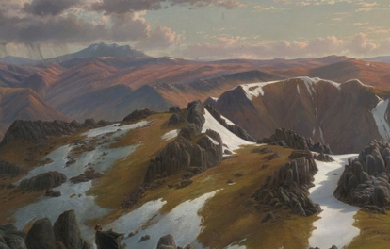
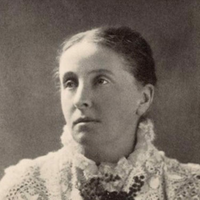
Ada Cambridge (21 November 1844 – 19 July 1926), later known as Ada Cross, was an English-born Australian writer. Overall she wrote more than twenty-five works of fiction, three volumes of poetry and two autobiographical works.[1] Many of her novels were serialised in Australian newspapers, and were never published in book form. While she was known to friends and family by her married name, Ada Cross, she was known to her newspaper readers as A.C.. Later in her career she reverted to her maiden name, Ada Cambridge, and it is thus by this name that she is known.[2] Ada was born at St Germans, Norfolk, the second child of Thomasine and Henry Cambridge, a gentleman farmer.[3] She was educated by governesses, an experience she abhorred. She wrote in a book of reminiscences: "I can truthfully affirm that I never learned anything which would now be considered worth learning until I had done with them all and started foraging for myself. I did have a few months of boarding-school at the end, and a very good school for its day it was, but it left no lasting impression on my mind." (The Retrospect, chap. IV). It was, in fact, an unmarried aunt who most contributed to her intellectual development.[4] On 25 April 1870 she was married to the Rev. George Frederick Cross and a few weeks later sailed for Australia. She arrived in Melbourne in August and was surprised to find it a well established city. Her husband was sent to Wangaratta, then to Yackandandah (1872), Ballan (1874), Coleraine (1877), Bendigo (1884) and Beechworth (1885), where they remained until 1893. Her Thirty Years in Australia (1903) describes their experiences in these parishes. She experienced her share of tragedy, including the loss of children to whooping cough and scarlet fever.[5] Cross at first was the typical hard-working wife of a country clergyman, taking part in all the activities of the parish and incidentally making her own children's clothes. Her health, however, broke down, for a number of reasons including a near-fatal miscarriage and a serious carriage accident, and her activities had to be reduced, but she continued to write. In 1893 Cross and her husband moved to their last parish, Williamstown, near Melbourne, and remained there until 1909. Her husband went on the retired clergy list at the end of 1909 with permission to operate in the diocese until 1912. In 1913 they both returned to England, where they stayed until his death on 27 February 1917. Ada returned to Australia later that year, and died in Melbourne on 19 July 1926. She was survived by a daughter and a son, Dr K. Stuart Cross. A street in the Canberra suburb of Cook is named in her honour. Career While Cambridge began writing in the 1870s to make money to help support her children, her formal published career spans from 1865 with Hymns on the Litany and The Two Surplices, to 1922 with an article 'Nightfall' in Atlantic Monthly.[6] According to Barton, her early works 'contain the seeds of her lifelong insistence on and pursuit of physical, spiritual and moral integrity as well as the interweaving of poetry and prose which was to typify her writing career'.[4] Cato[1] writes that 'some of her ideas were considered daring and even a little improper for a clergyman's wife. She touches on extramarital affairs and the physical bondage of wives'. In 1875 her first novel Up the Murray appeared in the Australasian but was not published separately, and it was not until 1890 with the publication of A Marked Man that her fame as a writer was established.[7] However, despite regular good reviews, there were many who discounted her because she did not write in the literary tradition of the time, one that was largely non-urban and masculine, that focused on survival against the harsh environment.[8] She was first president of the Women Writers Club and honorary life-member of the Lyceum Club of Melbourne, and had many friends in the literary world including Grace 'Jennings' Carmichael, Rolf Boldrewood, Ethel Turner, and George Robertson.[9] Ada Cambridge Prizes The Ada Cambridge Prizes were first awarded in 2005. There are now four prizes: The Ada Cambridge Biographical Prose Prize, Then Ada Cambridge Poetry Prize, The Young Adas Short Story Prize and the Young Adas Graphic Short Story Prize. These Prizes all carry a cash component and winners are announced at the Williamstown Literary Festival each year. Fill details can be found at www.willylitfest.org.au Novels The Two Surplices (1865) A Woman's Friendship (Serialised in the Age, 1889; first published in book form in 1988) My Guardian : A Story of the Fen Country (1874) Up the Murray (1875) In Two Years Time (1879) Dinah (1880) A Mere Chance (1880) Missed in the Crowd (1882) A Girl's Ideal (1882) Across the Grain (1882) The Three Miss Kings (1883) A Marriage Ceremony (1884) A Little Minx (1885) Against the Rules (1886) A Black Sheep (1889) A Woman's Friendship (1889) Not All in Vain (1891) Fidelis (1895) A Professional Beauty (1897) Materfamilias (1898) Path and Goal (1900) The Devastators (1901) Sisters (1904) A Platonic Friendship (1905) A Happy Marriage (1906) The Eternal Feminine (1907) The Making of Rachel Rowe (1914) Poetry collections Hymns on the Litany (1865) Hymns on the Holy Communion (1866) Echoes (1869) The Manor House and Other Poems (1875) Unspoken Thoughts (1887) The Hand in the Dark and Other Poems (1913) Short story collections[edit] The Vicar's Guest : A Tale (1869) At Midnight and Other Stories (1897) Children's fiction[edit] Little Jenny (1867) Autobiography Thirty Years in Australia (1903) The Retrospect (1912)
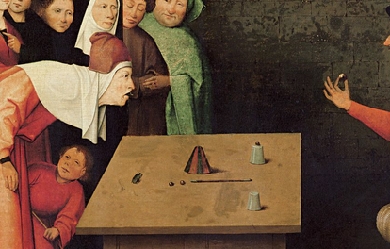
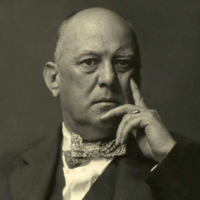
Aleister Crowley (/ˈkroʊli/; born Edward Alexander Crowley; 12 October 1875– 1 December 1947) was an English occultist, ceremonial magician, poet, painter, novelist, and mountaineer. He founded the religion and philosophy of Thelema, identifying himself as the prophet entrusted with guiding humanity into the Æon of Horus in the early 20th century. Born to a wealthy Plymouth Brethren family in Royal Leamington Spa, Warwickshire, Crowley rejected this fundamentalist Christian faith to pursue an interest in Western esotericism. He was educated at the University of Cambridge, where he focused his attentions on mountaineering and poetry, resulting in several publications. Some biographers allege that here he was recruited into a British intelligence agency, further suggesting that he remained a spy throughout his life. In 1898 he joined the esoteric Hermetic Order of the Golden Dawn, where he was trained in ceremonial magic by Samuel Liddell MacGregor Mathers and Allan Bennett. Moving to Boleskine House by Loch Ness in Scotland, he went mountaineering in Mexico with Oscar Eckenstein, before studying Hindu and Buddhist practices in India. He married Rose Edith Kelly and in 1904 they honeymooned in Cairo, Egypt, where Crowley claimed to have been contacted by a supernatural entity named Aiwass, who provided him with The Book of the Law, a sacred text that served as the basis for Thelema. Announcing the start of the Æon of Horus, The Book declared that its followers should adhere to the code of “Do what thou wilt” and seek to align themselves with their Will through the practice of magick. After an unsuccessful attempt to climb Kanchenjunga and a visit to India and China, Crowley returned to Britain, where he attracted attention as a prolific author of poetry, novels, and occult literature. In 1907, he and George Cecil Jones co-founded a Thelemite order, the A∴A∴, through which they propagated the religion. After spending time in Algeria, in 1912 he was initiated into another esoteric order, the German-based Ordo Templi Orientis (O.T.O.), rising to become the leader of its British branch, which he reformulated in accordance with his Thelemite beliefs. Through the O.T.O., Thelemite groups were established in Britain, Australia, and North America. Crowley spent the First World War in the United States, where he took up painting and campaigned for the German war effort against Britain, later revealing that he had infiltrated the pro-German movement to assist the British intelligence services. In 1920 he established the Abbey of Thelema, a religious commune in Cefalù, Sicily where he lived with various followers. His libertine lifestyle led to denunciations in the British press, and the Italian government evicted him in 1923. He divided the following two decades between France, Germany, and England, and continued to promote Thelema until his death. Crowley gained widespread notoriety during his lifetime, being a recreational drug experimenter, bisexual and an individualist social critic. He was denounced in the popular press as “the wickedest man in the world” and a Satanist. Crowley has remained a highly influential figure over Western esotericism and the counter-culture, and continues to be considered a prophet in Thelema. In 2002, a BBC poll ranked him as the seventy-third greatest Briton of all time. Early life Youth: 1875–94 Crowley was born as Edward Alexander Crowley at 30 Clarendon Square in Royal Leamington Spa, Warwickshire, on 12 October 1875. His father, Edward Crowley (1834–87), was trained as an engineer, but his share in a lucrative family brewing business, Crowley’s Alton Ales, had allowed him to retire before his son was born. His mother, Emily Bertha Bishop (1848–1917), came from a Devonshire-Somerset family and had a strained relationship with her son; she described him as “the Beast”, a name that he revelled in. The couple had been married at London’s Kensington Registry Office in November 1874, and were evangelical Christians. Crowley’s father had been born a Quaker, but had converted to the Exclusive Brethren, a faction of a Christian fundamentalist group known as the Plymouth Brethren, with Emily joining him upon marriage. Crowley’s father was particularly devout, spending his time as a travelling preacher for the sect and reading a chapter from the Bible to his wife and son after breakfast every day. Following the death of their baby daughter in 1880, in 1881 the Crowleys moved to Redhill, Surrey. At the age of 8, Crowley was sent to H.T. Habershon’s evangelical Christian boarding school in Hastings, and then to Ebor preparatory school in Cambridge, run by the Reverend Henry d’Arcy Champney, whom Crowley considered a sadist. In March 1887, when Crowley was 11, his father died of tongue cancer. Crowley described this as a turning point in his life, and he always maintained an admiration of his father, describing him as “his hero and his friend”. Inheriting a third of his father’s wealth, he began misbehaving at school and was harshly punished by Champney; Crowley’s family removed him from the school when he developed albuminuria. He then attended Malvern College and Tonbridge School, both of which he despised and left after a few terms. He became increasingly sceptical regarding Christianity, pointing out inconsistencies in the Bible to his religious teachers, and went against the Christian morality of his upbringing by smoking, masturbating, and having sex with prostitutes from whom he contracted gonorrhea. Sent to live with a Brethren tutor in Eastbourne, he undertook chemistry courses at Eastbourne College. Crowley developed interests in chess, poetry, and mountain climbing, and in 1894 climbed Beachy Head before visiting the Alps and joining the Scottish Mountaineering Club. The following year he returned to the Bernese Alps, climbing the Eiger, Trift, Jungfrau, Mönch, and Wetterhorn. Cambridge University: 1895–98 Having adopted the name of Aleister over Edward, in October 1895 Crowley began a three-year course at Trinity College, Cambridge, where he was entered for the Moral Science Tripos studying philosophy. With approval from his personal tutor, he changed to English literature, which was not then part of the curriculum offered. Crowley spent much of his time at university engaged in his pastimes, becoming president of the chess club and practising the game for two hours a day; he briefly considered a professional career as a chess player. Crowley also embraced his love of literature and poetry, particularly the works of Richard Francis Burton and Percy Bysshe Shelley. Many of his own poems appeared in student publications such as The Granta, Cambridge Magazine, and Cantab. He continued his mountaineering, going on holiday to the Alps to climb every year from 1894 to 1898, often with his friend Oscar Eckenstein, and in 1897 he made the first ascent of the Mönch without a guide. These feats led to his recognition in the Alpine mountaineering community. Crowley had his first significant mystical experience while on holiday in Stockholm in December 1896. Several biographers, including Lawrence Sutin, Richard Kaczynski, and Tobias Churton, believed that this was the result of Crowley’s first same-sex sexual experience, which enabled him to recognise his bisexuality. At Cambridge, Crowley maintained a vigorous sex life, largely with female prostitutes, from one of whom he caught syphilis, but eventually he took part in same-sex activities, despite their illegality. In October 1897, Crowley met Herbert Charles Pollitt (1871-1942), president of the Cambridge University Footlights Dramatic Club, and the two entered into a relationship. They broke apart because Pollitt did not share Crowley’s increasing interest in Western esotericism, a breakup that Crowley would regret for many years. Pollitt, collector and connoisseur, assumed the Christian name Jerome. He began to correspond with Oscar Wilde in 1898; Aubrey Beardsley designed him a bookplate for his use. In 1897, Crowley travelled to St Petersburg in Russia, later claiming that he was trying to learn Russian as he was considering a future diplomatic career there. Biographers Richard Spence and Tobias Churton suggested that Crowley had done so as an intelligence agent under the employ of the British secret service, speculating that he had been enlisted while at Cambridge. In October 1897, a brief illness triggered considerations of mortality and “the futility of all human endeavour”, and Crowley abandoned all thoughts of a diplomatic career in favour of pursuing an interest in the occult. In March 1898, he obtained A.E. Waite’s The Book of Black Magic and of Pacts (1898), and then Karl von Eckartshausen’s The Cloud Upon the Sanctuary (1896), furthering his occult interests. In 1898 Crowley privately published 100 copies of his poem Aceldama: A Place to Bury Strangers In, but it was not a particular success. That same year he published a string of other poems, including White Stains, a Decadent collection of erotic poetry that was printed abroad lest its publication be prohibited by the British authorities. In July 1898, he left Cambridge, not having taken any degree at all despite a “first class” showing in his 1897 exams and consistent “second class honours” results before that. The Golden Dawn: 1898–99 In August 1898, Crowley was in Zermatt, Switzerland, where he met the chemist Julian L. Baker, and the two began discussing their common interest in alchemy. Back in London, Baker introduced Crowley to George Cecil Jones, Baker’s brother in-law, and a fellow member of the occult society known as the Hermetic Order of the Golden Dawn, which had been founded in 1888. Crowley was initiated into the Outer Order of the Golden Dawn on 18 November 1898 by the group’s leader, Samuel Liddell MacGregor Mathers. The ceremony took place in the Golden Dawn’s Isis-Urania Temple held at London’s Mark Masons Hall, where Crowley took the magical motto and name “Frater Perdurabo”, which he interpreted as “I shall endure to the end”. Biographers Richard Spence and Tobias Churton have suggested that Crowley joined the Order under the command of the British secret services to monitor the activities of Mathers, who was known to be a Carlist. Crowley moved into his own luxury flat at 67–69 Chancery Lane and soon invited a senior Golden Dawn member, Allan Bennett, to live with him as his personal magical tutor. Bennett taught Crowley more about ceremonial magic and the ritual use of drugs, and together they performed the rituals of the Goetia, until Bennett left for South Asia to study Buddhism. In November 1899, Crowley purchased Boleskine House in Foyers on the shore of Loch Ness in Scotland. He developed a love of Scottish culture, describing himself as the “Laird of Boleskine”, and took to wearing traditional highland dress, even during visits to London. He continued writing poetry, publishing Jezebel and Other Tragic Poems, Tales of Archais, Songs of the Spirit, Appeal to the American Republic, and Jephthah in 1898–99; most gained mixed reviews from literary critics, although Jephthah was considered a particular critical success. Crowley soon progressed through the lower grades of the Golden Dawn, and was ready to enter the group’s inner Second Order. He was unpopular in the group; his bisexuality and libertine lifestyle had gained him a bad reputation, and he had developed feuds with some of the members, including W.B. Yeats. When the Golden Dawn’s London lodge refused to initiate Crowley into the Second Order, he visited Mathers in Paris, who personally admitted him into the Adeptus Minor Grade. A schism had developed between Mathers and the London members of the Golden Dawn, who were unhappy with his autocratic rule. Acting under Mathers’ orders, Crowley– with the help of his mistress and fellow initiate Elaine Simpson– attempted to seize the Vault of the Adepts, a temple space at 36 Blythe Road in West Kensington, from the London lodge members. When the case was taken to court, the judge ruled in favour of the London lodge, as they had paid for the space’s rent, leaving both Crowley and Mathers isolated from the group. Spence suggested that the entire scenario was part of an intelligence operation to undermine Mathers’ authority. Mexico, India, Paris, and marriage: 1900–03 In 1900, Crowley travelled to Mexico via the United States, settling in Mexico City and taking a local woman as his mistress. Developing a love of the country, he continued experimenting with ceremonial magic, working with John Dee’s Enochian invocations. He later claimed to have been initiated into Freemasonry while there, and he wrote a play based on Richard Wagner’s Tannhäuser as well as a series of poems, published as Oracles (1905). Eckenstein joined him later that year, and together they climbed several mountains, including Iztaccihuatl, Popocatepetl, and Colima, the latter of which they had to abandon owing to a volcanic eruption. Spence has suggested that the purpose of the trip might have been to explore Mexican oil prospects for British intelligence. Leaving Mexico, Crowley headed to San Francisco before sailing for Hawaii aboard the Nippon Maru. On the ship he had a brief affair with a married woman named Mary Alice Rogers; saying he had fallen in love with her, he wrote a series of poems about the romance, published as Alice: An Adultery (1903). Briefly stopping at Japan and Hong Kong, Crowley reached Ceylon, where he met with Allan Bennett, who was there studying Shaivism. The pair spent some time in Kandy before Bennett decided to become a Buddhist monk in the Theravada tradition, travelling to Burma to do so. Crowley decided to tour India, devoting himself to the Hindu practice of raja yoga, from which he claimed to have achieved the spiritual state of dhyana. He spent much of this time studying at the Meenakshi Amman Temple in Madura, and also wrote poetry which was published as The Sword of Song (1904). He contracted malaria, and had to recuperate from the disease in Calcutta and Rangoon. In 1902, he was joined in India by Eckenstein and several other mountaineers: Guy Knowles, H. Pfannl, V. Wesseley, and Jules Jacot-Guillarmod. Together the Eckenstein-Crowley expedition attempted K2, which had never been climbed. On the journey, Crowley was afflicted with influenza, malaria, and snow blindness, and other expedition members were also struck with illness. They reached an altitude of 20,000 feet (6,100 m) before turning back. Arriving in Paris in November 1902, he hung out with his friend and future brother-in-law, the painter Gerald Kelly, and through him became a fixture of the Parisian arts scene, authoring a series of poems on the work of an acquaintance, the sculptor Auguste Rodin, published as Rodin in Rime (1907). One of those frequenting this milieu was W. Somerset Maugham, who after briefly meeting Crowley later used him as a model for the character of Oliver Haddo in his novel The Magician (1908). Returning to Boleskine in April 1903, in August Crowley wed Gerald’s sister Rose Edith Kelly in a “marriage of convenience” to prevent her entering an arranged marriage; the marriage appalled the Kelly family and damaged his friendship with Gerald. Heading on a honeymoon to Paris, Cairo, and then Ceylon, Crowley fell in love with Rose and worked to prove his affections. While on his honeymoon, he wrote her a series of love poems, published as Rosa Mundi and other Love Songs (1906), as well as authoring the religious satire Why Jesus Wept (1904). Developing Thelema Egypt and The Book of the Law: 1904 In February 1904, Crowley and Rose arrived in Cairo. Claiming to be a prince and princess, they rented an apartment in which Crowley set up a temple room and began invoking ancient Egyptian deities, while studying Islamic mysticism and Arabic. According to Crowley’s later account, Rose regularly became delirious and informed him “they are waiting for you”. On 18 March, she explained that “they” were the god Horus, and on 20 March proclaimed that “the Equinox of the Gods has come”. She led him to a nearby museum, where she showed him a seventh-century BCE mortuary stele known as the Stele of Ankh-ef-en-Khonsu; Crowley thought it important that the exhibit’s number was 666, the number of the beast in Christian belief, and in later years termed the artefact the “Stele of Revealing.” According to Crowley’s later statements, on 8 April he heard a disembodied voice that claimed to be that of Aiwass, the messenger of Horus, or Hoor-Paar-Kraat. Crowley said that he wrote down everything the voice told him over the course of the next three days, and titled it Liber L vel Legis or The Book of the Law. The book proclaimed that humanity was entering a new Aeon, and that Crowley would serve as its prophet. It stated that a supreme moral law was to be introduced in this Aeon, “Do what thou wilt shall be the whole of the Law,” and that people should learn to live in tune with their Will. This book, and the philosophy that it espoused, became the cornerstone of Crowley’s religion, Thelema. Crowley said that at the time he had been unsure what to do with The Book of the Law. Often resenting it, he said that he ignored the instructions which the text commanded him to perform, which included taking the Stele of Revealing from the museum, fortifying his own island, and translating the book into all the world’s languages. According to his account, he instead sent typescripts of the work to several occultists he knew, putting the manuscript away and ignoring it. Kangchenjunga and China: 1905–06 Returning to Boleskine, Crowley came to believe that Mathers had begun using magic against him, and the relationship between the two broke down. On 28 July 1905, Rose gave birth to Crowley’s first child, a daughter named Lilith, with Crowley authoring the pornographic Snowdrops From a Curate’s Garden to entertain his recuperating wife. He also founded a publishing company through which to publish his poetry, naming it the Society for the Propagation of Religious Truth in parody of the Society for Promoting Christian Knowledge. Among its first publications were Crowley’s Collected Works, edited by Ivor Back. His poetry often received strong reviews (either positive or negative), but never sold well. In an attempt to gain more publicity, he issued a reward of £100 for the best essay on his work. The winner of this was J. F. C. Fuller, a British Army officer and military historian, whose essay, The Star in the West (1907), heralded Crowley’s poetry as some of the greatest ever written. Crowley decided to climb Kangchenjunga in the Himalayas of Nepal, widely recognised as the world’s most treacherous mountain. Assembling a team consisting of Jacot-Guillarmod, Charles Adolphe Reymond, Alexis Pache, and Alcesti C. Rigo de Righi, the expedition was marred by much argument between Crowley and the others, who thought that he was reckless. They eventually mutinied against Crowley’s control, with the other climbers heading back down the mountain as nightfall approached despite Crowley’s warnings that it was too dangerous. Subsequently, Pache and several porters were killed in an accident, something for which Crowley was widely blamed by the mountaineering community. Spending time in Moharbhanj, where he took part in big game hunting and wrote the homoerotic work The Scented Garden, Crowley met up with Rose and Lilith in Calcutta before being forced to leave India after shooting dead a native man who tried to mug him. Briefly visiting Bennett in Burma, Crowley and his family decided to tour Southern China, hiring porters and a nanny for the purpose. Spence has suggested that this trip to China was orchestrated as part of a British intelligence scheme to monitor the region’s opium trade. Crowley smoked opium throughout the journey, which took the family from Tengyueh through to Yungchang, Tali, Yunnanfu, and then Hanoi. On the way he spent much time on spiritual and magical work, reciting the “Bornless Ritual”, an invocation to his Holy Guardian Angel, on a daily basis. While Rose and Lilith returned to Europe, Crowley headed to Shanghai to meet old friend Elaine Simpson, who was fascinated by The Book of the Law; together they performed rituals in an attempt to contact Aiwass. Crowley then sailed to Japan and Canada, before continuing to New York City, where he unsuccessfully solicited support for a second expedition up Kangchenjunga. Upon arrival in Britain, Crowley learned that his daughter Lilith had died of typhoid in Rangoon, something he later blamed on Rose’s increasing alcoholism. Under emotional distress, his health began to suffer, and he underwent a series of surgical operations. He began short-lived romances with actress Vera “Lola” Neville (née Snepp) and author Ada Leverson, while Rose gave birth to Crowley’s second daughter, Lola Zaza, in February 1907. The A∴A∴ and the Holy Books of Thelema: 1907–09 With his old mentor George Cecil Jones, Crowley continued performing the Abramelin rituals at the Ashdown Park Hotel in Coulsdon, Surrey. Crowley claimed that in doing so he attained samadhi, or union with Godhead, thereby marking a turning point in his life. Making heavy use of hashish during these rituals, he wrote an essay on “The Psychology of Hashish” (1909) in which he championed the drug as an aid to mysticism. He also claimed to have been contacted once again by Aiwass in late October and November 1907, adding that Aiwass dictated two further texts to him, “Liber VII” and “Liber Cordis Cincti Serpente”, both of which were later classified in the corpus of Holy Books of Thelema. Crowley wrote down more Thelemic Holy Books during the last two months of the year, including “Liber LXVI”, “Liber Arcanorum”, “Liber Porta Lucis, Sub Figura X”, “Liber Tau”, “Liber Trigrammaton” and “Liber DCCCXIII vel Ararita”, which he again claimed to have received from a preternatural source. Crowley stated that in June 1909, when the manuscript of The Book of the Law was rediscovered at Boleskine, he developed the opinion that Thelema represented objective truth. Crowley’s inheritance was running out. Trying to earn money, he was hired by George Montagu Bennett, the Earl of Tankerville, to help protect him from witchcraft; recognising Bennett’s paranoia as being based in his cocaine addiction, Crowley took him on holiday to France and Morocco to recuperate. In 1907, he also began taking in paying students, whom he instructed in occult and magical practice. Victor Neuburg, whom Crowley met in February 1907, became his sexual partner and closest disciple; in 1908 the pair toured northern Spain before heading to Tangier, Morocco. The following year Neuburg stayed at Boleskine, where he and Crowley engaged in sadomasochism. Crowley continued to write prolifically, producing such works of poetry as Ambergris, Clouds Without Water, and Konx Om Pax, as well as his first attempt at an autobiography, The World’s Tragedy. Recognising the popularity of short horror stories, Crowley wrote his own, some of which were published, and he also published several articles in Vanity Fair, a magazine edited by his friend Frank Harris. He also wrote Liber 777, a book of magical and Qabalistic correspondences that borrowed from Mathers and Bennett. In November 1907, Crowley and Jones decided to found an occult order to act as a successor to the Hermetic Order of the Golden Dawn, being aided in doing so by Fuller. The result was the A∴A∴. The group’s headquarters and temple were situated at 124 Victoria Street in central London, and their rites borrowed much from those of the Golden Dawn, but with an added Thelemic basis. Its earliest members included solicitor Richard Noel Warren, artist Austin Osman Spare, Horace Sheridan-Bickers, author George Raffalovich, Francis Henry Everard Joseph Feilding, engineer Herbert Edward Inman, Kenneth Ward, and Charles Stansfeld Jones. In March 1909, Crowley began production of a biannual periodical titled The Equinox. He billed this periodical, which was to become the “Official Organ” of the A∴A∴, as “The Review of Scientific Illuminism”. Crowley had become increasingly frustrated with Rose’s alcoholism, and in November 1909 he divorced her on the grounds of his own adultery. Lola was entrusted to Rose’s care; the couple remained friends and Rose continued to live at Boleskine. Her alcoholism worsened, and as a result she was institutionalised in September 1911. Algeria and the Rites of Eleusis: 1909–11 In November 1909, Crowley and Neuburg travelled to Algeria, touring the desert from El Arba to Aumale, Bou Saâda, and then Dā'leh Addin, with Crowley reciting the Quran on a daily basis. During the trip he invoked the thirty aethyrs of Enochian magic, with Neuburg recording the results, later published in The Equinox as The Vision and the Voice. Following a mountaintop sex magic ritual, Crowley also performed an invocation to the demon Choronzon involving blood sacrifice, considering the results to be a watershed in his magical career. Returning to London in January 1910, Crowley found that Mathers was suing him for publishing Golden Dawn secrets in The Equinox; the court found in favour of Crowley. The case was widely reported on in the press, with Crowley gaining wider fame. Crowley enjoyed this, and played up to the sensationalist stereotype of being a Satanist and advocate of human sacrifice, despite being neither. The publicity attracted new members to the A∴A∴, among them Frank Bennett, James Bayley, Herbert Close, and James Windram. The Australian violinist Leila Waddell soon became Crowley’s lover. Deciding to expand his teachings to a wider audience, Crowley developed the Rites of Artemis, a public performance of magic and symbolism featuring A∴A∴ members personifying various deities. It was first performed at the A∴A∴ headquarters, with attendees given a fruit punch containing peyote to enhance their experience. Various members of the press attended, and reported largely positively on it. In October and November 1910, Crowley decided to stage something similar, the Rites of Eleusis, at Caxton Hall, Westminster; this time press reviews were mixed. Crowley came under particular criticism from West de Wend Fenton, editor of The Looking Glass newspaper, who called him “one of the most blasphemous and cold-blooded villains of modern times”.i Fenton’s articles suggested that Crowley and Jones were involved in homosexual activity; Crowley did not mind, but Jones unsuccessfully sued for libel. Fuller broke off his friendship and involvement with Crowley over the scandal, and Crowley and Neuburg returned to Algeria for further magical workings. The Equinox continued publishing, and various books of literature and poetry were also published under its imprint, like Crowley’s Ambergris, The Winged Beetle, and The Scented Garden, as well as Neuburg’s The Triumph of Pan and Ethel Archer’s The Whirlpool. In 1911, Crowley and Waddell holidayed in Montigny-sur-Loing, where he wrote prolifically, producing poems, short stories, plays, and 19 works on magic and mysticism, including the two final Holy Books of Thelema. In Paris, he met Mary Desti, who became his next “Scarlet Woman”, with the two undertaking magical workings in St. Moritz; Crowley believed that one of the Secret Chiefs, Ab-ul-Diz, was speaking through her. Based on Desti’s statements when in trance, Crowley wrote the two-volume Book 4 (1912–13) and at the time developed the spelling “magick” in reference to the paranormal phenomenon as a means of distinguishing it from the stage magic of illusionists. Ordo Templi Orientis and the Paris Working: 1912–14 In early 1912, Crowley published The Book of Lies, a work of mysticism that biographer Lawrence Sutin described as “his greatest success in merging his talents as poet, scholar, and magus”. The German occultist Theodor Reuss later accused him of publishing some of the secrets of his own occult order, the Ordo Templi Orientis (O.T.O.), within The Book. Crowley convinced Reuss that the similarities were coincidental, and the two became friends. Reuss appointed Crowley as head of the O.T.O’s British branch, the Mysteria Mystica Maxima (MMM), and at a ceremony in Berlin Crowley adopted the magical name of Baphomet and was proclaimed "X° Supreme Rex and Sovereign Grand Master General of Ireland, Iona, and all the Britons". With Reuss’ permission, Crowley set about advertising the MMM and re-writing many O.T.O. rituals, which were then based largely on Freemasonry; his incorporation of Thelemite elements proved controversial in the group. Fascinated by the O.T.O’s emphasis on sex magic, Crowley devised a magical working based on anal sex and incorporated it into the syllabus for those O.T.O. members who had been initiated into the eleventh degree. In March 1913 Crowley acted as producer for The Ragged Ragtime Girls, a group of female violinists led by Waddell, as they performed at London’s Old Tivoli theatre. They subsequently performed in Moscow for six weeks, where Crowley had a sadomasochistic relationship with the Hungarian Anny Ringler. In Moscow, Crowley continued to write plays and poetry, including “Hymn to Pan”, and the Gnostic Mass, a Thelemic ritual that became a key part of O.T.O. liturgy. Churton suggested that Crowley had travelled to Moscow on the orders of British intelligence to spy on revolutionary elements in the city. In January 1914 Crowley and Neuburg settled in to an apartment in Paris, where the former was involved in the controversy surrounding Jacob Epstein’s new monument to Oscar Wilde. Together Crowley and Neuburg performed the six-week “Paris Working”, a period of intense ritual involving strong drug use in which they invoked the gods Mercury and Jupiter. As part of the ritual, the couple performed acts of sex magic together, at times being joined by journalist Walter Duranty. Inspired by the results of the Working, Crowley authored Liber Agapé, a treatise on sex magic. Following the Paris Working, Neuburg began to distance himself from Crowley, resulting in an argument in which Crowley cursed him. United States: 1914–19 By 1914 Crowley was living a hand-to-mouth existence, relying largely on donations from A∴A∴ members and dues payments made to O.T.O. In May he transferred ownership of Boleskine House to the MMM for financial reasons, and in July he went mountaineering in the Swiss Alps. During this time the First World War broke out. After recuperating from a bout of phlebitis, Crowley set sail for the United States aboard the RMS Lusitania in October 1914. Arriving in New York City, he moved into a hotel and began earning money writing for the American edition of Vanity Fair and undertaking freelance work for the famed astrologer Evangeline Adams. In the city, he continued experimenting with sex magic, through the use of masturbation, female prostitutes, and male clients of a Turkish bathhouse; all of these encounters were documented in his diaries. Professing to be of Irish ancestry and a supporter of Irish independence from Great Britain, Crowley began to espouse support for Germany in their war against Britain. He became involved in New York’s pro-German movement, and in January 1915 German spy George Sylvester Viereck employed him as a writer for his propagandist paper, The Fatherland, which was dedicated to keeping the US neutral in the conflict. In later years, detractors denounced Crowley as a traitor to Britain for this action. In reality, Crowley was a double agent, working for the British intelligence services to infiltrate and undermine Germany’s operation in New York. Many of his articles in The Fatherland were hyperbolic, for instance comparing Kaiser Wilhelm II to Jesus Christ; in July 1915 he orchestrated a publicity stunt– reported on by The New York Times– in which he declared independence for Ireland in front of the Statue of Liberty; the real intention was to make the German lobby appear ridiculous in the eyes of the American public. It has been argued that he encouraged the German Navy to destroy the Lusitania, informing them that it would ensure the US stayed out of the war, while in reality hoping that it would bring the US into the war on Britain’s side. Crowley entered into a relationship with Jeanne Robert Foster, with whom he toured the West Coast. In Vancouver, headquarters of the North American O.T.O., he met with Charles Stansfeld Jones and Wilfred Talbot Smith to discuss the propagation of Thelema on the continent. In Detroit he experimented with anhalonium at Parke-Davis, then visited Seattle, San Francisco, Santa Cruz, Los Angeles, San Diego, Tijuana, and the Grand Canyon, before returning to New York. There he befriended Ananda Coomaraswamy and his wife Alice Richardson; Crowley and Richardson performed sex magic in April 1916, following which she became pregnant and then miscarried. Later that year he took a “magical retirement” to a cabin by Lake Pasquaney owned by Evangeline Adams. There, he made heavy use of drugs and undertook a ritual after which he proclaimed himself “Master Therion”. He also wrote several short stories based on J.G. Frazer’s The Golden Bough and a work of literary criticism, The Gospel According to Bernard Shaw. In December he moved to New Orleans, his favourite US city, before spending February 1917 with evangelical Christian relatives in Titusville, Florida. Returning to New York, he moved in with artist and A∴A∴ member Leon Engers Kennedy, in May learning of his mother’s death. After the collapse of The Fatherland, Crowley continued his association with Viereck, who appointed him contributing editor of arts journal The International. Crowley used it to promote Thelema, but it soon ceased publication. He then moved to the studio apartment of Roddie Minor, who became his partner and Scarlet Woman. Through their rituals, Crowley believed that they were contacted by a preternatural entity named Alamantrah. The relationship soon ended. In 1918, Crowley went on a magical retreat in the wilderness of Esopus Island on the Hudson River. Here, he began a translation of the Tao Te Ching, painted Thelemic slogans on the riverside cliffs, and– he later claimed– experienced past life memories of being Ge Xuan, Pope Alexander VI, Alessandro Cagliostro, and Eliphas Levi. Back in New York, he moved to Greenwich Village, where he took Leah Hirsig as his lover and next Scarlet Woman. He took up painting as a hobby, exhibiting his work at the Greenwich Village Liberal Club and attracting the attention of the New York Evening World. With the financial assistance of sympathetic Freemasons, Crowley revived The Equinox with the first issue of volume III, known as “The Blue Equinox”. He spent mid-1919 on a climbing holiday in Montauk before returning to London in December. Abbey of Thelema: 1920–23 Now destitute and back in London, Crowley came under attack from the tabloid John Bull, which labelled him traitorous “scum” for his work with the German war effort; several friends aware of his intelligence work urged him to sue, but he decided not to. When he was suffering from asthma, a doctor prescribed him heroin, to which he soon became addicted. In January 1920, he moved to Paris, renting a house in Fontainebleau with Leah Hirsig; they were soon joined in a ménage à trois by Ninette Shumway, and also by Leah’s newborn daughter Anne “Poupée” Leah. Crowley had ideas of forming a community of Thelemites, which he called the Abbey of Thelema after the Abbaye de Thélème in François Rabelais’ satire Gargantua and Pantagruel. After consulting the I Ching, he chose Cefalù (on Sicily, Italy) as a location, and after arriving there, began renting the old Villa Santa Barbara as his Abbey on 2 April. Moving to the commune with Hirsig, Shumway, and their children Hansi, Howard, and Poupée, Crowley described the scenario as “perfectly happy... my idea of heaven.” They wore robes, and performed rituals to the sun god Ra at set times during the day, also occasionally performing the Gnostic Mass; the rest of the day they were left to follow their own interests. Undertaking widespread correspondences, Crowley continued to paint, wrote a commentary on The Book of the Law, and revised the third part of Book 4. He offered a libertine education for the children, allowing them to play all day and witness acts of sex magic. He occasionally travelled to Palermo to visit rent boys and buy supplies, including drugs; his heroin addiction came to dominate his life, and cocaine began to erode his nasal cavity. There was no cleaning rota, and wild dogs and cats wandered throughout the building, which soon became unsanitary. Poupée died in October 1920, and Ninette gave birth to a daughter, Astarte Lulu Panthea, soon afterwards. New followers continued to arrive at the Abbey to be taught by Crowley. Among them was film star Jane Wolfe, who arrived in July 1920, where she was initiated into the A∴A∴ and became Crowley’s secretary. Another was Cecil Frederick Russell, who often argued with Crowley, disliking the same-sex sexual magic that he was required to perform, and left after a year. More conducive was the Australian Thelemite Frank Bennett, who also spent several months at the Abbey. In February 1922, Crowley returned to Paris for a retreat in an unsuccessful attempt to kick his heroin addiction. He then went to London in search of money, where he published articles in The English Review criticising the Dangerous Drugs Act 1920 and wrote a novel, Diary of a Drug Fiend, completed in July. On publication, it received mixed reviews; he was lambasted by the Sunday Express, which called for its burning and used its influence to prevent further reprints. Subsequently, a young Thelemite named Raoul Loveday moved to the Abbey with his wife Betty May; while Loveday was devoted to Crowley, May detested him and life at the commune. She later said that Loveday was made to drink the blood of a sacrificed cat, and that they were required to cut themselves with razors every time they used the pronoun “I”. Loveday drank from a local polluted stream, soon developing a liver infection resulting in his death in February 1923. Returning to London, May told her story to the press. John Bull proclaimed Crowley “the wickedest man in the world” and “a man we’d like to hang”, and although Crowley deemed many of their accusations against him to be slanderous, he was unable to afford the legal fees to sue them. As a result, John Bull continued its attack, with its stories being repeated in newspapers throughout Europe and in North America. The Fascist government of Benito Mussolini learned of Crowley’s activities and in April 1923 he was given a deportation notice forcing him to leave Italy; without him, the Abbey closed. Later life Tunisia, Paris, and London: 1923–29 Crowley and Hirsig went to Tunis, where, dogged by continuing poor health, he unsuccessfully tried again to give up heroin, and began writing what he termed his “autohagiography”, The Confessions of Aleister Crowley. They were joined in Tunis by the Thelemite Norman Mudd, who became Crowley’s public relations consultant. Employing a local boy, Mohammad ben Brahim, as his servant, Crowley went with him on a retreat to Nefta, where they performed sex magic together. In January 1924, Crowley travelled to Nice, France, where he met with Frank Harris, underwent a series of nasal operations, and visited the Institute for the Harmonious Development of Man, and had a positive opinion of its founder, George Gurdjieff. Destitute, he took on a wealthy student, Alexander Zu Zolar, before taking on another American follower, Dorothy Olsen. Crowley took Olsen back to Tunisia for a magical retreat in Nefta, where he also wrote To Man (1924), a declaration of his own status as a prophet entrusted with bringing Thelema to humanity. After spending the winter in Paris, in early 1925 Crowley and Olsen returned to Tunis, where he wrote The Heart of the Master (1938) as an account of a vision he experienced in a trance. In March Olsen became pregnant, and Hirsig was called to take care of her; she miscarried, following which Crowley took Olsen back to France. Hirsig later distanced herself from Crowley, who then denounced her. According to Crowley, Reuss had named him head of the O.T.O. upon his death, but this was challenged by a leader of the German O.T.O., Heinrich Tränker. Tränker called the Hohenleuben Conference in Thuringia, Germany, which Crowley attended. There, prominent members like Karl Germer and Martha Küntzel championed Crowley’s leadership, but other key figures like Albin Grau, Oskar Hopfer, and Henri Birven backed Tränker by opposing it, resulting in a split in the O.T.O. Moving to Paris, where he broke with Olsen in 1926, Crowley went through a large number of lovers over the following years, with whom he experimented in sex magic. Throughout, he was dogged by poor health, largely caused by his heroin and cocaine addictions. In 1928, Crowley was introduced to young Englishman Israel Regardie, who embraced Thelema and became Crowley’s secretary for the next three years. That year, Crowley also met Gerald Yorke, who began organising Crowley’s finances but never became a Thelemite. He also befriended Thomas Driberg; Driberg did not accept Thelema either. It was here that Crowley also published one of his most significant works, Magick in Theory and Practice, which received little attention at the time. In December 1929 Crowley met the Nicaraguan Maria Teresa Sanchez. Crowley was deported from France by the authorities, who disliked his reputation and feared that he was a German agent. So that she could join him in Britain, Crowley married Sanchez in August 1929. Now based in London, Mandrake Press agreed to publish his autobiography in a limited edition six-volume set, also publishing his novel Moonchild and book of short stories The Stratagem. Mandrake went into liquidation in November 1930, before the entirety of Crowley’s Confessions could be published. Mandrake’s owner P.R. Stephenson meanwhile wrote The Legend of Aleister Crowley, an analysis of the media coverage surrounding him. Berlin and London: 1930–38 In April 1930, Crowley moved to Berlin, where he took Hanni Jaegar as his magical partner; the relationship was troubled. In September he went to Lisbon in Portugal to meet the poet Fernando Pessoa. There, he decided to fake his own death, doing so with Pessoa’s help at the Boca do Inferno rock formation. He then returned to Berlin, where he reappeared three weeks later at the opening of his art exhibition at the Gallery Neumann-Nierendorf. Crowley’s paintings fitted with the fashion for German Expressionism; few of them sold, but the press reports were largely favourable. In August 1931, he took Bertha Busch as his new lover; they had a violent relationship, and often physically assaulted one another. He continued to have affairs with both men and women while in the city, and met with famous people like Aldous Huxley and Alfred Adler. After befriending him, in January 1932 he took the communist Gerald Hamilton as a lodger, through whom he was introduced to many figures within the Berlin far left; it is possible that he was operating as a spy for British intelligence at this time, monitoring the communist movement. Crowley left Busch and returned to London, where he took Pearl Brooksmith as his new Scarlet Woman. Undergoing further nasal surgery, it was here in 1932 that he was invited to be guest of honour at Foyles’ Literary Luncheon, also being invited by Harry Price to speak at the National Laboratory of Psychical Research. In need of money, he launched a series of court cases against people whom he believed had libelled him, some of which proved successful. He gained much publicity for his lawsuit against Constable and Co for publishing Nina Hamnett’s Laughing Torso (1932)– a book he thought libelled him– but lost the case. The court case added to Crowley’s financial problems, and in February 1935 he was declared bankrupt. During the hearing, it was revealed that Crowley had been spending three times his income for several years. Crowley developed a platonic friendship with Deidre Patricia O’Doherty; she offered to bear his child, who was born in May 1937. Named Randall Gair, Crowley nicknamed him Aleister Atatürk. Crowley continued to socialise with friends, holding curry parties in which he cooked particularly spicy food for them. In 1936, he published his first book in six years, The Equinox of the Gods, which contained a facsimile of The Book of the Law and was considered to be volume III, number 3, of The Equinox periodical. The work sold well, resulting in a second print run. In 1937 he gave a series of public lectures on yoga in Soho. Crowley was now living largely off contributions supplied by the O.T.O.'s Agape Lodge in California, led by rocket scientist John Whiteside “Jack” Parsons. Crowley was intrigued by the rise of Nazism in Germany, and influenced by his friend Martha Küntzel believed that Adolf Hitler might convert to Thelema; when the Nazis abolished the German O.T.O. and imprisoned Germer, who fled to the US, Crowley then lambasted Hitler as a black magician. Second World War and death: 1939–47 When the Second World War broke out, Crowley wrote to the Naval Intelligence Division offering his services, but they declined. He associated with a variety of figures in Britain’s intelligence community at the time, including Dennis Wheatley, Roald Dahl, Ian Fleming, and Maxwell Knight, and claimed to have been behind the “V for Victory” sign first used by the BBC; this has never been proven. In 1940, his asthma worsened, and with his German-produced medication unavailable, he returned to using heroin, once again becoming addicted. As the Blitz hit London, Crowley relocated to Torquay, where he was briefly hospitalised with asthma, and entertained himself with visits to the local chess club. Tiring of Torquay, he returned to London, where he was visited by American Thelemite Grady McMurtry, to whom Crowley awarded the title of “Hymenaeus Alpha”. He stipulated that though Germer would be his immediate successor, McMurty should succeed Germer as head of the O.T.O. after the latter’s death. With O.T.O. initiate Lady Frieda Harris, Crowley developed plans to produce a tarot card set, designed by him and painted by Harris. Accompanying this was a book, published in a limited edition as The Book of Thoth by Chiswick Press in 1944. To aid the war effort, he wrote a proclamation on the rights of humanity, Liber Oz, and a poem for the liberation of France, Le Gauloise. Crowley’s final publication during his lifetime was a book of poetry, Olla: An Anthology of Sixty Years of Song. Another of his projects, Aleister Explains Everything, was posthumously published as Magick Without Tears. In April 1944 Crowley briefly moved to Aston Clinton in Buckinghamshire, where he was visited by the poet Nancy Cunard, before relocating to Hastings in Sussex, where he took up residence at the Netherwood boarding house. He took a young man named Kenneth Grant as his secretary, paying him in magical teaching rather than wages. He was also introduced to John Symonds, whom he appointed to be his literary executor; Symonds thought little of Crowley, later publishing negative biographies of him. Corresponding with the illusionist Arnold Crowther, it was through him that Crowley was introduced to Gerald Gardner, the future founder of Gardnerian Wicca. They became friends, with Crowley authorising Gardner to revive Britain’s ailing O.T.O. Another visitor was Eliza Marian Butler, who interviewed Crowley for her book The Myth of the Magus. Other friends and family also spent time with him, among them Doherty and Crowley’s son Aleister Atatürk. On 1 December 1947, Crowley died at Netherwood of chronic bronchitis aggravated by pleurisy and myocardial degeneration, aged 72. His funeral was held at a Brighton crematorium on 5 December; about a dozen people attended, and Louis Wilkinson read excerpts from the Gnostic Mass, The Book of the Law, and “Hymn to Pan”. The funeral generated press controversy, and was labelled a Black Mass by the tabloids. Crowley’s ashes were sent to Germer in the US, who buried them in his garden in Hampton, New Jersey. Beliefs and thought Crowley’s thought was not always cohesive, and was influenced by a variety of sources, ranging from eastern religious movements and practices like Hindu yoga and Buddhism, scientific naturalism, and various currents within Western esotericism, among them ceremonial magic, alchemy, astrology, Rosicrucianism, Kabbalah, and the Tarot. Philosopher John Moore opined that Crowley’s thought was rooted in Romanticism and the Decadent movement, an assessment shared by historian Alex Owen, who noted that Crowley adhered to the “modus operandi” of the decadent movement throughout his life. Crowley believed that the twentieth century marked humanity’s entry to the Aeon of Horus, a new era in which humans would take increasing control of their destiny. He believed that this Aeon follows on from the Aeon of Osiris, in which paternalistic religions like Christianity, Islam, and Buddhism dominated the world, and that this in turn had followed the Aeon of Isis, which had been maternalistic and dominated by goddess worship. Thelema revolves around the idea that human beings each have their own True Will that they should discover and pursue, and that this exists in harmony with the Cosmic Will that pervades the universe. The moral code of “Do What Thou Wilt” is believed by Thelemites to be the faith’s ethical law, although academic Marco Pasi noted that this was not anarchistic or libertarian in structure, as Crowley saw individuals as part of a wider societal organism. Crowley believed in the objective existence of magic, which he chose to spell “Magick”. In his book Magick in Theory and Practice, Crowley defined Magick as “the Science and Art of causing change to occur in conformity with Will”. He also told his disciple Karl Germer that “Magick is getting into communication with individuals who exist on a higher plane than ours. Mysticism is the raising of oneself to their level.” Crowley saw Magick as a third way between religion and science, giving The Equinox the subtitle of “The Method of Science; the Aim of Religion”. Both during his life and after it, Crowley has been widely described as a Satanist, usually by detractors. Crowley stated he did not consider himself a Satanist, nor did he worship Satan, as he did not accept the Christian world view in which Satan was believed to exist. He was also accused of advocating human sacrifice, largely because of a passage in Book 4 in which he stated that “A male child of perfect innocence and high intelligence is the most satisfactory victim”. This was intended as a veiled reference to male masturbation. Personal life Crowley biographer Martin Booth asserted that Crowley was “self-confident, brash, eccentric, egotistic, highly intelligent, arrogant, witty, wealthy, and, when it suited him, cruel”. Similarly, Richard Spence noted that Crowley was “capable of immense physical and emotional cruelty”. Biographer Lawrence Sutin noted that Crowley exhibited “courage, skill, dauntless energy, and remarkable focus of will” while at the same time showing a "blind arrogance, petty fits of bile, [and] contempt for the abilities of his fellow men". The Thelemite Lon Milo DuQuette noted that Crowley “was by no means perfect” and “often alienated those who loved him dearest.” Crowley enjoyed being outrageous and flouting conventional morality, with John Symonds noting that he “was in revolt against the moral and religious values of his time”. Crowley’s political thought was subjected to an in-depth study by academic Marco Pasi, who noted that for Crowley, socio-political concerns were subordinate to metaphysical and spiritual ones. Pasi argued that it was difficult to classify Crowley as being either on the political left or right, but he was perhaps best categorised as a “conservative revolutionary” despite not being affiliated with the German-based conservative revolutionary movement. Pasi noted that Crowley sympathised with extreme ideologies like Nazism and Marxism-Leninism, in that they wished to violently overturn society, and hoped that both Nazi Germany and the Soviet Union might adopt Thelema. Crowley described democracy as an “imbecile and nauseating cult of weakness”, and commented that The Book of the Law proclaimed that “there is the master and there is the slave; the noble and the serf; the 'lone wolf’ and the herd”. In this attitude he was influenced by the work of Friedrich Nietzsche and by Social Darwinism. Crowley also saw himself as an aristocrat, describing himself as Laird Boleskine; he had contempt for most of the British aristocracy, and once described his ideology as “aristocratic communism”. Crowley was bisexual, and exhibited a sexual preference for women. In particular he had an attraction toward “exotic women”, and claimed to have fallen in love on multiple occasions; Kaczynski stated that “when he loved, he did so with his whole being, but the passion was typically short-lived”. Even in later life, he was able to attract young bohemian women to be his lovers, largely due to his charisma. During same-sex anal intercourse, he usually played the passive role, which Booth believed “appealed to his masochistic side”. Crowley argued that gay and bisexual people should not suppress their sexual orientation, commenting that a person “must not be ashamed or afraid of being homosexual if he happens to be so at heart; he must not attempt to violate his own true nature because of public opinion, or medieval morality, or religious prejudice which would wish he were otherwise.” On other issues he adopted a more conservative attitude; he opposed abortion on moral grounds, believing that no woman following her True Will would ever desire one. Views on race and gender Biographer Lawrence Sutin stated that “blatant bigotry is a persistent minor element in Crowley’s writings”. Sutin thought Crowley “a spoiled scion of a wealthy Victorian family who embodied many of the worst John Bull racial and social prejudices of his upper-class contemporaries”, noting that he “embodied the contradiction that writhed within many Western intellectuals of the time: deeply held racist viewpoints courtesy of their culture, coupled with a fascination with people of colour”. Crowley insulted his close Jewish friend Victor Neuburg using anti-Semitic slurs, and he had mixed opinions about Jews as a group. Although he praised their “sublime” poetry and stated that their “imagination, romance, loyalty, probity and humanity”, he also thought that centuries of persecution had led some Jews to exhibit “avarice, servility, falseness, cunning and the rest”. He was also known to praise various ethnic and cultural groups, for instance he thought that the Chinese people exhibited a “spiritual superiority” to the English, and praised Muslims for exhibiting “manliness, straightforwardness, subtlety, and self-respect”. Crowley also exhibited a “general misogyny” that Booth believed arose from his bad relationship with his mother. Sutin noted that Crowley “largely accepted the notion, implicitly embodied in Victorian sexology, of women as secondary social beings in terms of intellect and sensibility”. Crowley described women as “moral inferiors” who had to be treated with “firmness, kindness and justice”. Legacy and influence Crowley has remained an influential figure, both amongst occultists and in popular culture, particularly that of Britain, but also of other parts of the world. In 2002, a BBC poll placed Crowley seventy-third in a list of the 100 Greatest Britons. Richard Cavendish has written of him that “In native talent, penetrating intelligence and determination, Aleister Crowley was the best-equipped magician to emerge since the seventeenth century.” Wouter Hanegraaff asserted that Crowley was an extreme representation of “the dark side of the occult”, while philosopher John Moore opined that Crowley stood out as a “Modern Master” when compared with other prominent occult figures like George Gurdjieff, P.D. Ouspensky, Rudolf Steiner, or Helena Blavatsky, also describing him as a “living embodiment” of Oswald Spengler’s “Faustian Man”. Biographer Tobias Churton considered Crowley “a pioneer of consciousness research”, and Sutin thought that he had made “distinctly original contributions” to the study of yoga in the West. Thelema continued to develop and spread following Crowley’s death. In 1969, the O.T.O. was reactivated in California under the leadership of Grady Louis McMurtry; in 1985 its right to the title was unsuccessfully challenged in court by a rival group, the Society Ordo Templi Orientis, led by Brazilian Thelemite Marcelo Ramos Motta. Another American Thelemite was the filmmaker Kenneth Anger, who had been influenced by Crowley’s writings from a young age. In the United Kingdom, Kenneth Grant propagated a tradition known as Typhonian Thelema through his organisation, the Typhonian O.T.O., later renamed the Typhonian Order. Also in Britain, an occultist known as Amado Crowley claimed to be Crowley’s son; this has been refuted by academic investigation. Amado argued that Thelema was a false religion created by Crowley to hide his true esoteric teachings, which Amado claimed to be propagating. Several Western esoteric traditions other than Thelema were also influenced by Crowley. Gerald Gardner, founder of Gardnerian Wicca, made use of much of Crowley’s published material when composing the Gardnerian ritual liturgy, and the Australian witch Rosaleen Norton was also heavily influenced by Crowley’s ideas. L. Ron Hubbard, the American founder of Scientology, was involved in Thelema in the early 1940s (with Jack Parsons), and it has been argued that Crowley’s ideas influenced some of Hubbard’s work. Two prominent figures in religious Satanism, Anton LaVey and Michael Aquino, were also influenced by Crowley’s work. Crowley also had a wider influence in British popular culture. He was included as one of the figures on the cover art of The Beatles’ album Sgt. Pepper’s Lonely Hearts Club Band (1967), and his motto of “Do What Thou Wilt” was inscribed on the vinyl of Led Zeppelin’s album Led Zeppelin III (1970). Led Zeppelin co-founder Jimmy Page bought Boleskine in 1971, and part of the band’s film The Song Remains the Same was filmed in the grounds. He sold it in 1992. David Bowie made reference to Crowley in the lyrics of his song “Quicksand” (1971), while Ozzy Osbourne and his lyricist Bob Daisley wrote a song titled “Mr Crowley” (1980). Bibliography References Wikipedia—https://en.wikipedia.org/wiki/Aleister_Crowley

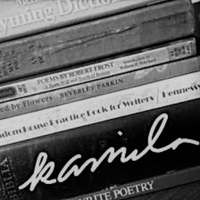
Just writing and trying to see if I am a 'scientist' indeed--while greeting you from Manila. :) "We are the scientists trying to make sense of the stars inside us." (Christopher Poindexter) Copyright Notice Kamila More Cabisada and Writing Art, 2016-2017. Unauthorized use and/or duplication of material personally written by Kamila More Cabisada without express and written permission from the author is strictly prohibited. Excerpts and links may be used, provided that full and clear credit is given to Kamila More Cabisada with appropriate and specific direction to the original content. (kamilawriting.wordpress.com)
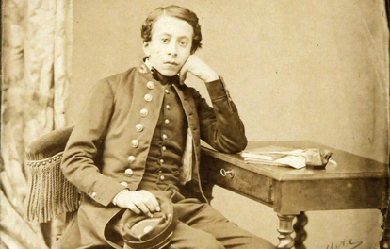
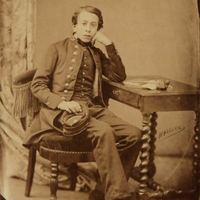
Édouard-Joachim Corbière, dit Tristan Corbière, né le 18 juillet 1845 à Ploujean (aujourd'hui Morlaix, dans le Finistère) et mort le 1er mars 1875 à Morlaix, est un poète français, proche du symbolisme, figure du « poète maudit ». Auteur d'un unique recueil poétique, Les Amours jaunes, et de quelques fragments en prose, Tristan Corbière mène une vie marginale et miséreuse, nourrie de deux grands échecs dus à sa maladie osseuse et sa « laideur » presque imaginaire qu'il se complaît à accuser, celui de sa vie sentimentale (il aima non réciproquement une seule femme, Marcelle), et celui de sa passion pour la mer (il rêvait de devenir marin, comme son père Édouard Corbière). Sa poésie porte en elle ces deux grandes blessures qui l'amèneront à choisir un style très cynique et incisif, envers lui-même autant qu'envers la vie et le monde qui l'entoure. Il meurt à 29 ans, peut-être tuberculeux, célibataire sans enfant et sans travail, retranché dans son vieux manoir breton, incompris de ses contemporains (« Ah, si j'étais un peu compris ! »6), et dont la poésie novatrice ne sera reconnue que bien après sa mort.

Not much to write, but I have so much to say! I'm 19 years old with a heart that is only getting bigger. I love this world and only want to make it better. Writing for me is something I just started in January of 2015. I moved away from my home country to the Dominican Republic where I am with my other side of my family. Only speaking a little spanish has made me think more than I talk. So when it comes to my writing, it is all for a message. Something I enjoy very much. I've liked writing ever since I received an A+ in my English 12 class in high school. Sounds goofy. I'm a graduate of 2014. Beloit, WI is where I hold my building grounds inside of me. I can talk forever if you give me a chance. Yes, RESPECT is everything with me. I love showing love to people. You can't bring me down. Lift me up instead! Always give a message in writing. It's just the feeling of wanting the same in return.
_by_Sir_Hubert_von_Herkomer.jpg)
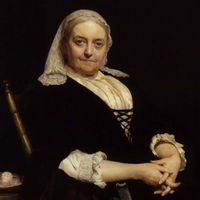
Dinah Maria Craik (/kreɪk/; born Dinah Maria Mulock, also often credited as Miss Mulock or Mrs. Craik) (20 April 1826– 12 October 1887) was an English novelist and poet. Life Mulock was born at Stoke-on-Trent to Dinah and Thomas Mulock and raised in Newcastle-under-Lyme, Staffordshire, where her father was then minister of a small congregation. Her childhood and early youth were much affected by his unsettled fortunes, but she obtained a good education from various quarters and felt called to be a writer. She came to London about 1846, much at the same time as two friends, Alexander Macmillan and Charles Edward Mudie. Introduced by Camilla Toulmin to Westland Marston, she rapidly made friends in London, and found great encouragement for the stories for the young. In 1865 she married George Lillie Craik a partner with Alexander Macmillan in the publishing house of Macmillan & Company, and nephew of George Lillie Craik. They adopted a foundling baby girl, Dorothy, in 1869. At Shortlands, near Bromley, Kent, while in a period of preparation for Dorothy’s wedding, she died of heart failure on 12 October 1887, aged 61. Her last words were reported to have been: “Oh, if I could live four weeks longer! but no matter, no matter!” Her final book, An Unknown Country, was published by Macmillan in 1887, the year of her death. Dorothy married Alexander Pilkington in 1887 but they divorced in 1911 and she went on to marry Captain Richards of Macmine Castle. She and Alexander had just one son John Mulock Pilkington. John married Freda Roskelly and they had a son and daughter. Works * Mulock’s early success began with the novel Cola Monti (1849), and in the same year she produced her first three-volume novel, The Ogilvies, to great success. It was followed in 1850 by Olive, then by The Head of the Family in 1851 and Agatha’s Husband in 1853, in which the author used her recollections of East Dorset. Mulock published the fairy story Alice Learmont in 1852, and collected numerous short stories from periodicals under the title of Avillion and other Tales in 1853. A similar collection appeared in 1857 under the title of Nothing New. * Thoroughly established in public favour as a successful author, Mulock took a cottage at Wildwood, North End, Hampstead, and joined an extensive social circle. Her personal attractions were at this period of her life considerable, and people kindly judged her simple cordiality, staunch friendliness, and thorough goodness of heart. In 1857 she published the work by which she will be principally remembered, John Halifax, Gentleman, a presentation of the ideals of English middle-class life. Mulock’s next important work, A Life for a Life (1859), made more money and was perhaps at the time more widely read than John Halifax, and was followed by Mistress and Maid (1863) and Christian’s Mistake (1865), followed by didactic works such as A Woman’s Thoughts about Women and Sermons out of Church. Another collection, titled The Unkind Word and Other Stories, included a scathing criticism of Benjamin Heath Malkin for overworking his son Thomas, a child prodigy who died at seven. Later on, Craik returned to more fanciful tales and achieved a great success with The Little Lame Prince (1874). In 1881 she published a collection of her earlier poems under the title Poems of Thirty Years, New and Old; some, such as Philip my King addressed to her godson Philip Bourke Marston and Douglas, Douglas, Tender and True achieved a wide popularity. Reception * Richard Garnett holds that “the genuine passion that filled her early works of fiction had not unnaturally faded out of middle life”, replaced by didacticism. To Garnett, Craik’s increasing self-awareness led to this. Garnett judges Craik’s poetry as “a woman’s poems, tender, domestic, and sometimes enthusiastic, always genuine song, and the product of real feeling”.
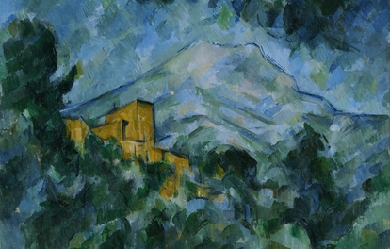
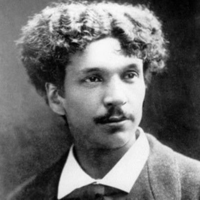
Charles Cros, né le 1er octobre 1842 à Fabrezan (Aude) et mort le 9 août 1888 dans le 6e arrondissement de Paris, est un poète et inventeur français. Originaire d'une famille de Lagrasse (Aude), Charles Cros est le frère cadet d'Antoine Cros (1833-1903), médecin, et d'Henry Cros (1840-1907), peintre et verrier : ils participèrent tous les trois aux dîners des Vilains Bonshommes et aux réunions du Cercle des poètes zutiques entre 1869 et 1872. Il servit la Commune de Paris en 1871, comme aide-major au 249e bataillon5. Il est le père du poète Guy-Charles Cros (1879-1956). Le scientifique Passionné de littérature et de sciences, Charles Cros est pendant un temps, de 1860 à 1863, professeur de chimie à l'Institut parisien des sourds-muets, avant de se consacrer à la recherche scientifique. En 1867, il présente à l'Exposition universelle de 1867 un prototype de télégraphe automatique à la suite de ses travaux portant sur l'amélioration de la technologie de ce système de télécommunication. En 1869, il présente à la Société française de photographie un procédé de photographie en couleurs qui est à l'origine du procédé actuel de trichromie. Le poète Il publie ses premiers poèmes dans le Parnasse contemporain et fréquente les cercles et cafés littéraires de la bohème de l'époque (le Cercle des poètes Zutistes — qu'il a créé —, les Vilains Bonshommes, les Hydropathes), ainsi que le salon de Nina de Villard qui sera sa maîtresse jusqu'en 1877. Mais il est davantage connu pour ses monologues, dont le plus connu est Le Hareng saur, qu'il récite lui-même dans des cabarets parisiens comme Le Chat noir. Son œuvre de poète, brillante — elle sera plus tard l'une des sources d'inspiration du surréalisme — est cependant ignorée à son époque. Il le résume amèrement dans ce poème caractéristique : Je sais faire des vers perpétuels. Les hommes Sont ravis à ma voix qui dit la vérité. La suprême raison dont j'ai, fier, hérité Ne se payerait pas avec toutes les sommes. J'ai tout touché : le feu, les femmes, et les pommes ; J'ai tout senti : l'hiver, le printemps et l’été ; J'ai tout trouvé, nul mur ne m'ayant arrêté. Mais Chance, dis-moi donc de quel nom tu te nommes ? Je me distrais à voir à travers les carreaux Des boutiques, les gants, les truffes et les chèques Où le bonheur est un suivi de six zéros. Je m'étonne, valant bien les rois, les évêques, Les colonels et les receveurs généraux De n'avoir pas de l’eau, du soleil, des pastèques. Les références Wikipedia – https://fr.wikipedia.org/wiki/Charles_Cros
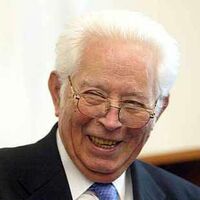
Alí Chumacero Lora (Acaponeta, Nayarit, 9 de julio de 1918 – México, D. F., 22 de octubre de 20101 ) fue un poeta y editor mexicano. Trayectoria Alí Chumacero residió desde 1937 en la Ciudad de México. Perteneció al grupo de escritores que fundó la revista Tierra Nueva y dirigió la publicación entre 1940 y 1942. Fue redactor de la revista El Hijo Pródigo y de México en la cultura, suplemento del ya extinto periódico Novedades, así como director de Letras de México. Fue becario de El Colegio de México en 1952 y del Centro Mexicano de Escritores entre 1952 y 1953. Desde 1964 fue miembro de la Academia Mexicana de la Lengua.2 Fue miembro honorario del Seminario de Cultura Mexicana. Como autor, editor, redactor y corrector fue una de las figuras claves en la historia del Fondo de Cultura Económica, casa editorial para la cual laboró por más de medio siglo de trabajo intermitente. Fue famoso por haber corregido para el FCE, entre cientos de obras, el Pedro Páramo de Juan Rulfo.4 Alí Chumacero negó en repetidas ocasiones haber mejorado drásticamente la obra con su corrección,5 pero el rumor de que lo hizo persiste. Por su trayectoria como poeta recibió muchos premios, entre los que destacan el Premio Xavier Villaurrutia (1984),6 el Premio Internacional Alfonso Reyes (1986), el Premio Nacional de Lingüística y Literatura (1987),7 el Premio Estatal de Literatura Amado Nervo (1993) y la Medalla Belisario Domínguez del Senado de la República (1996). El 24 de junio de 2008 recibió un homenaje, con motivo de su 90 cumpleaños, en el Palacio de Bellas Artes en la Ciudad de México. Víctima de neumonía, falleció a los 92 años el viernes 22 de octubre de 2010.9 Obras Poeta austero pero de gran intensidad lírica, Alí Chumacero sólo publicó tres colecciones de poesía, un disco donde los recita, y un compendio de ensayos críticos: 1940 - Páramo de sueños 1948 - Imágenes desterradas 1956 - Palabras en reposo 1987 - Los momentos críticos (ensayos) 1997 - En la orilla del silencio y otros poemas en la voz del autor (CD) Entre sus poemas se destaca Poema de amorosa raíz, cuya estrofa final reza: Cuando aún no había flores en las sendas porque las sendas no eran ni las flores estaban; cuando azul no era el cielo ni rojas las hormigas, ya éramos tú y yo. Páramo de sueños. Referencias wikipedia – http://es.wikipedia.org/wiki/Alí_Chumacero
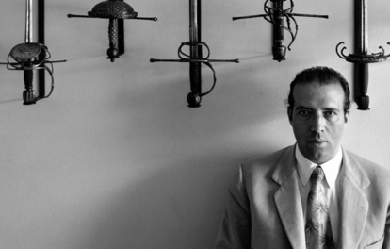
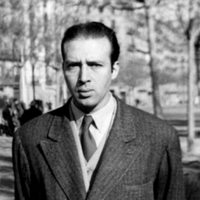
Juan Eduardo Cirlot Laporta (Barcelona, 9 de abril de 1916 - 11 de mayo de 1973) fue un poeta, crítico de arte, mitólogo, iconógrafo y músico español. Fue hijo de Juan Cirlot y María Laporta. Estudió bachillerato con los jesuitas de Barcelona y trabajó en una agencia de aduanas y en el Banco Hispanoamericano. En 1937 fue movilizado para luchar por la República; a comienzos de 1940 fue movilizado otra vez, pero por el bando franquista. Estuvo en Zaragoza hasta 1943; allí frecuentó el círculo intelectual y artístico de la ciudad y se relacionó con el pintor Alfonso Buñuel -hermano de Luis Buñuel. En el verano del 43 regresó a Barcelona para trabajar en el Banco Hispanoamericano y conoce al novelista Benítez de Castro, quien le introdujo en el periodismo como crítico de arte. Trabaja en la librería editorial Argos. Compone música y trata a los artistas del grupo Dau al Set. En 1949 colabora en la revista Dau al Set. En octubre viaja a París y conoce a André Breton en persona. Se edita Igor Stravinsky, su primer ensayo. En 1951 empieza a trabajar en la editorial Gustavo Gili, donde permanecerá hasta su muerte. Entre 1949 y 1954 conoce y trata al etnólogo y músicologo alemán Marius Schneider en Barcelona; Trabaja con José Gudiol Ricart. En 1954 aparece El ojo en la mitología. Su simbolismo. Entra a formar parte de la Academia del Faro de San Cristóbal. En el año 1958 empieza a escribir colaboraciones en Goya, Papeles de Son Armadans, etc. y aparece su obra más famosa e internacional, el Diccionario de símbolos tradicionales en la editorial Luis Miracle. Siguen unos años de intensa actividad como crítico y conferenciante. En 1962 se publica en inglés su diccionario con el título A Dictionary of Symbols con prólogo de Herbert Read. En 1966 vió la película El señor de la guerra de Franklin J. Schaffner. En 1971 enferma de cáncer de páncreas, es operado y el 11 de mayo de 1973 muere en su casa de la calle Herzegovina de Barcelona. Fue padre de la medievalista y filóloga Victoria Cirlot. Análisis Juan Eduardo Cirlot se adscribió al filo de los cuarenta a la escuela surrealista francesa y al dadaísmo, para asumir luego una tradición espiritualista de muy lontanos horizontes (la Cábala, el sufismo y los estudios orientales) de anhelo universal. De ahí proviene su interés por la simbología, que imbuirá toda su actividad literaria y su importante labor como crítico de arte. Hizo importantes estudios sobre simbología y hermenéutica medieval, reunió una importante colección de espadas y su copiosa y variada producción poética —más de cincuenta libros— se mantuvo alejado e independiente de las corrientes que dominaron la poesía de posguerra a causa de su oscuridad y hermetismo; últimamente, sin embargo, su figura no cesa de revalorizarse a través de continuas revisiones, reediciones, apariciones de obras inéditas y homenajes. Lo más conocido en su obra es la fase de su evolución poética centrada en la actriz Rosemary Forsyth, que encarna a Bronwyn en la película El señor de la guerra (1965) de Franklin J. Schaffner e inspiró la fase permutacional de su poesía. Cirlot cultivó también el aforismo en su libro Del no mundo (1969), donde puede rastrearse su pensamiento hasta las fuentes de Nietzsche y Lao Tse. En 1986 se publicó el inédito El mundo del objeto a la luz del surrealismo que, escrito en 1953, se adelanta a las corrientes conceptuales de las últimas décadas y que sigue siendo referencia esencial para profesores y estudiosos del universo del objeto artístico. En 1988 se publica 88 sueños, colección completa de los sueños transcritos por Cirlot publicada parcialmente en la revista catalana Dau al Set y que muestran a las claras la importancia que para su formación tuvo el sello del surrealismo. Como erudito es conocido por su Diccionario de símbolos, que sigue reeditándose con éxito. Obras Poemarios * Pájaros tristes y otros poemas a Pilar Bayona (1942) * Canto de la Vida muerta (1946) * Donde las lilas crecen (1946) * Cuarto canto de la vida muerta y otros fragmentos (1961) * Regina tenebrarum (1966) * Bronwyn (1967) * Cosmogonía (1969) * Orfeo (1970) * 44 sonetos de amor (1971) * Variaciones fonovisuales (1996) * En la llama. Poesía (1943-1959) (2005) Ensayos * Diccionario de los ismos (1949) * Ferias y atracciones (1950) * El arte de Gaudí (1950) * La pintura abstracta (1951) * El estilo del siglo XX (1952) * Introducción al surrealismo (1953) * El mundo del objeto a la luz del surrealismo (1953) * El Ojo en la Mitología: su simbolismo (1954) * El espíritu abstracto desde la prehistoria a la Edad Media (1965) * Diccionario de símbolos (1968) * Del no mundo : Aforismos (1969) * 88 sueños; Los sentimientos imaginarios y otros artículos (1988) * Confidencias literarias (1996) * Significación de la pintura de Tapies Referencias Wikipedia—http://es.wikipedia.org/wiki/Juan_Eduardo_Cirlot
.jpeg)
"Muevo los pies y pienso: -ah la inmensidad de la boca, los gritos de los adultos, tomo las gotas y presiono mis piernas y aunque aún voy sintiendo pena, voy agitando mis brazos, haciendo el escándalo que es necesario. Tengo la pluma en mano y cuelga de mi la furia por exhumar la pesadilla" -Cesia XIX, en movimiento.


